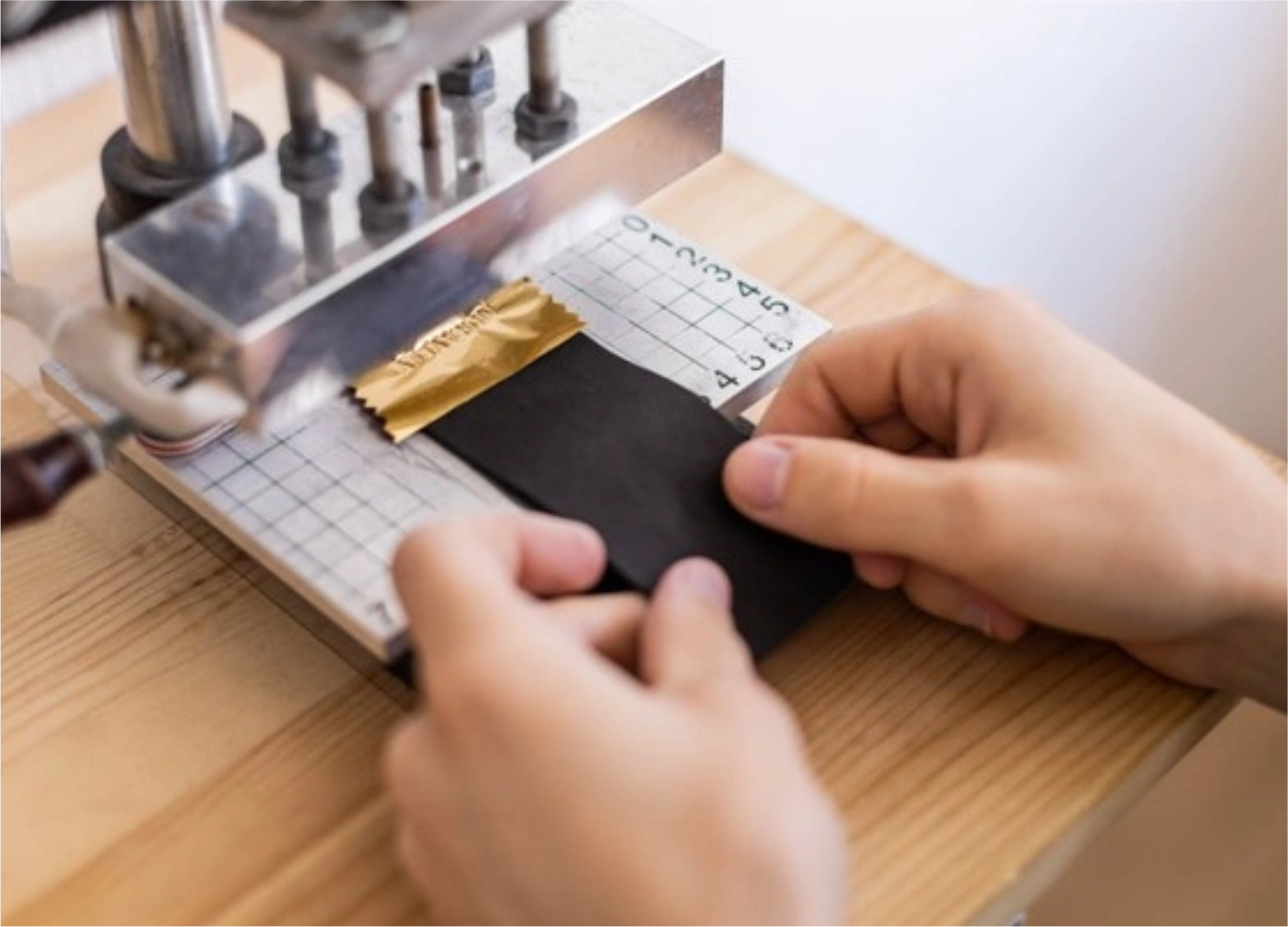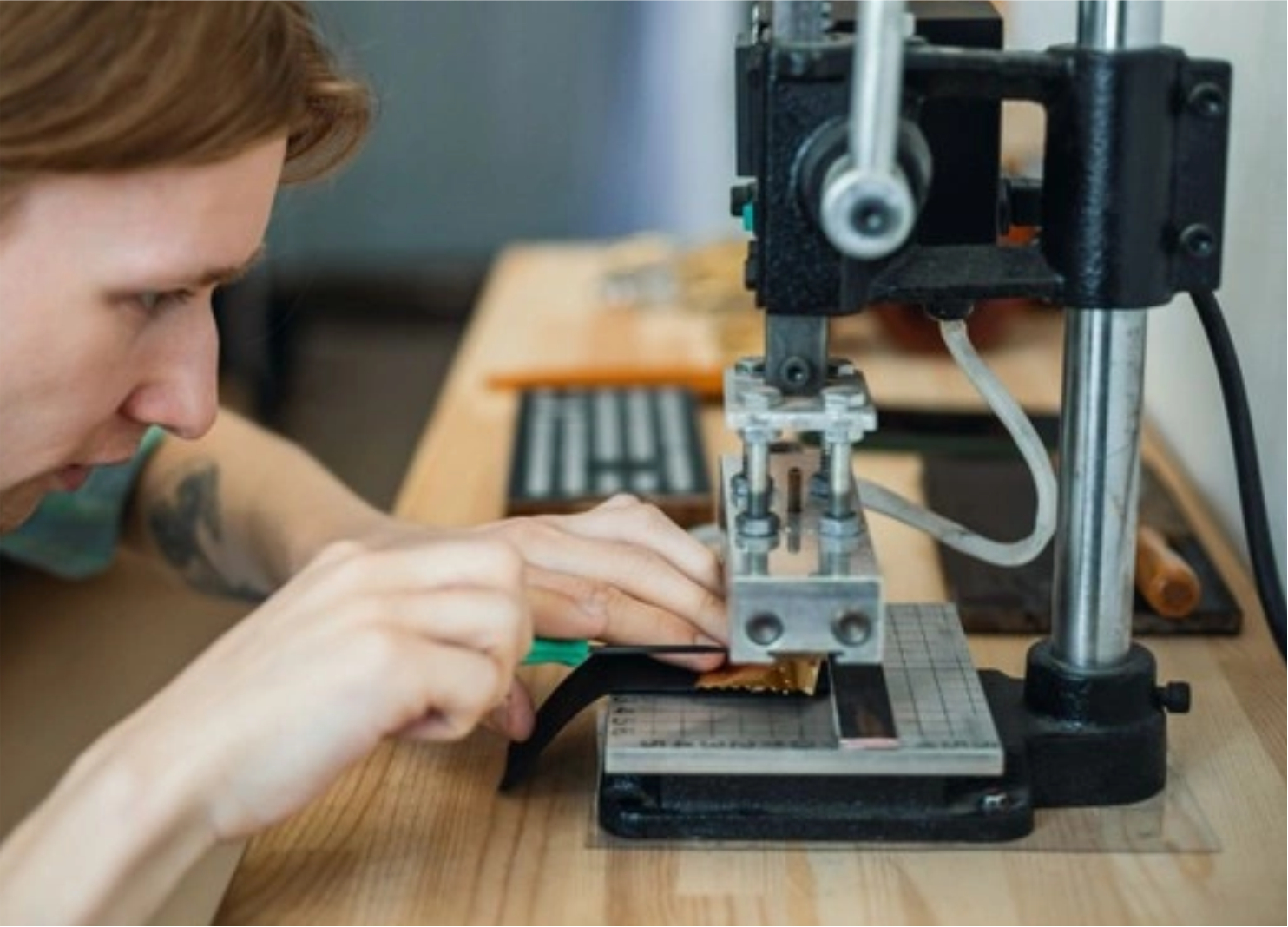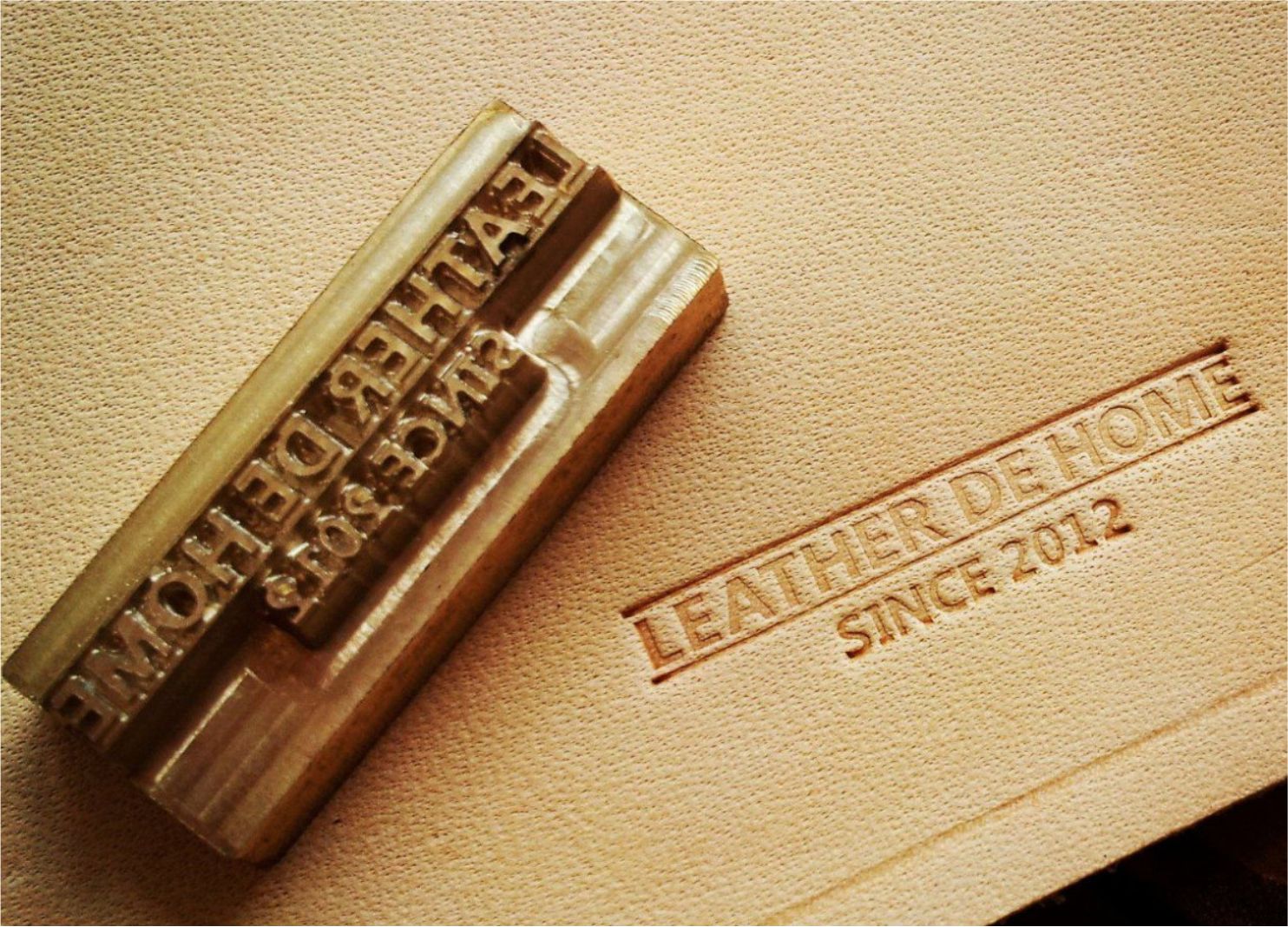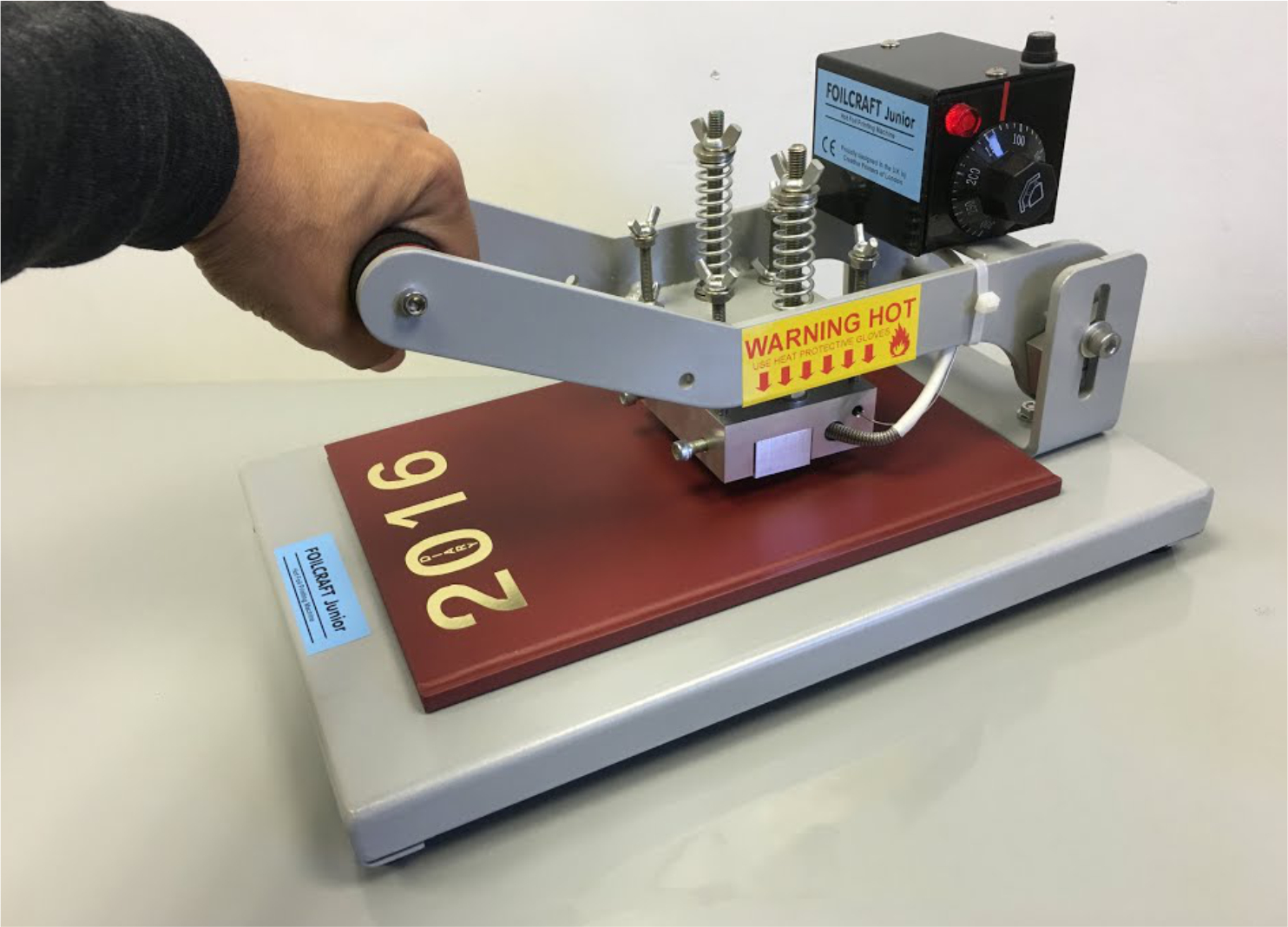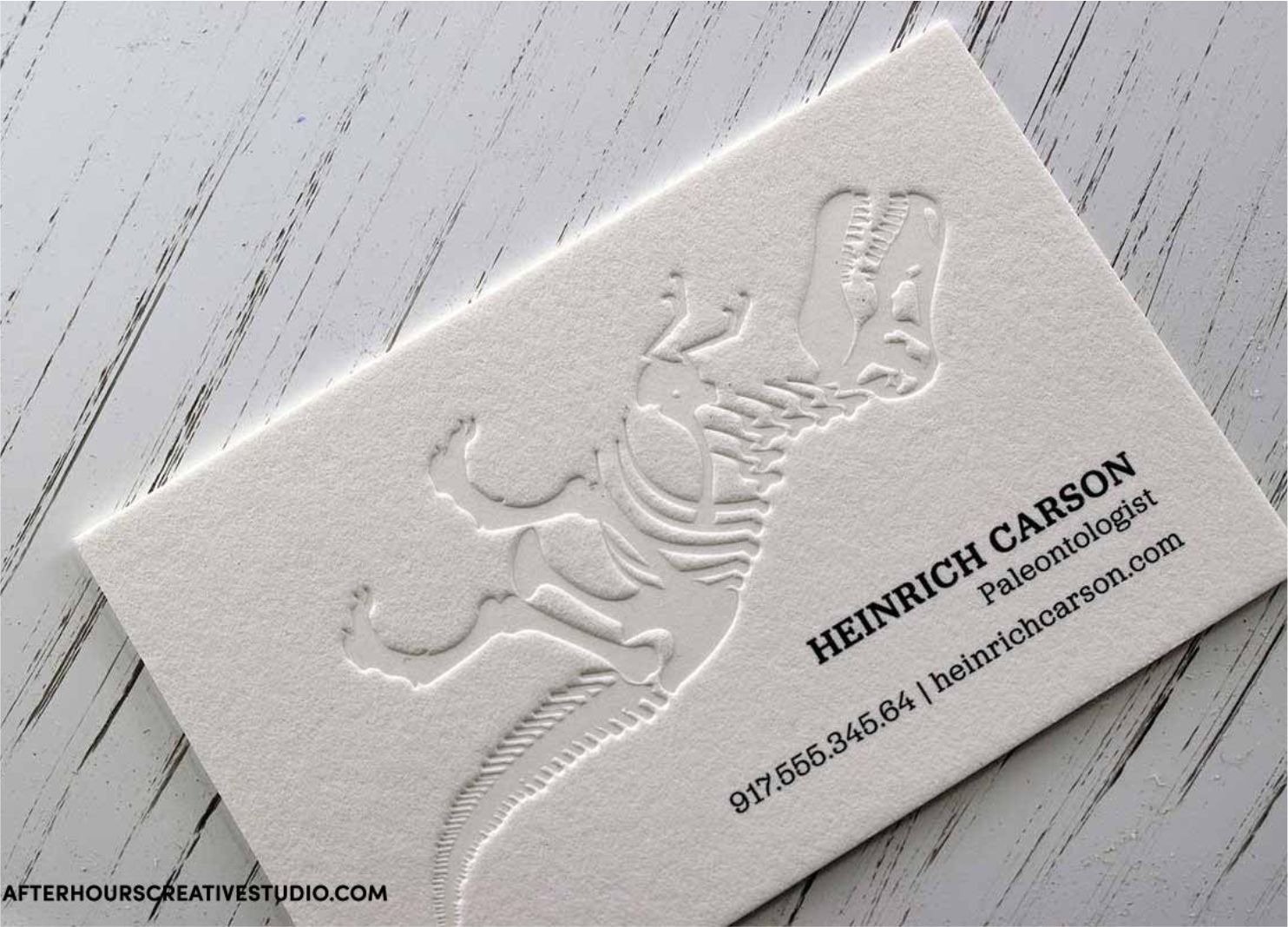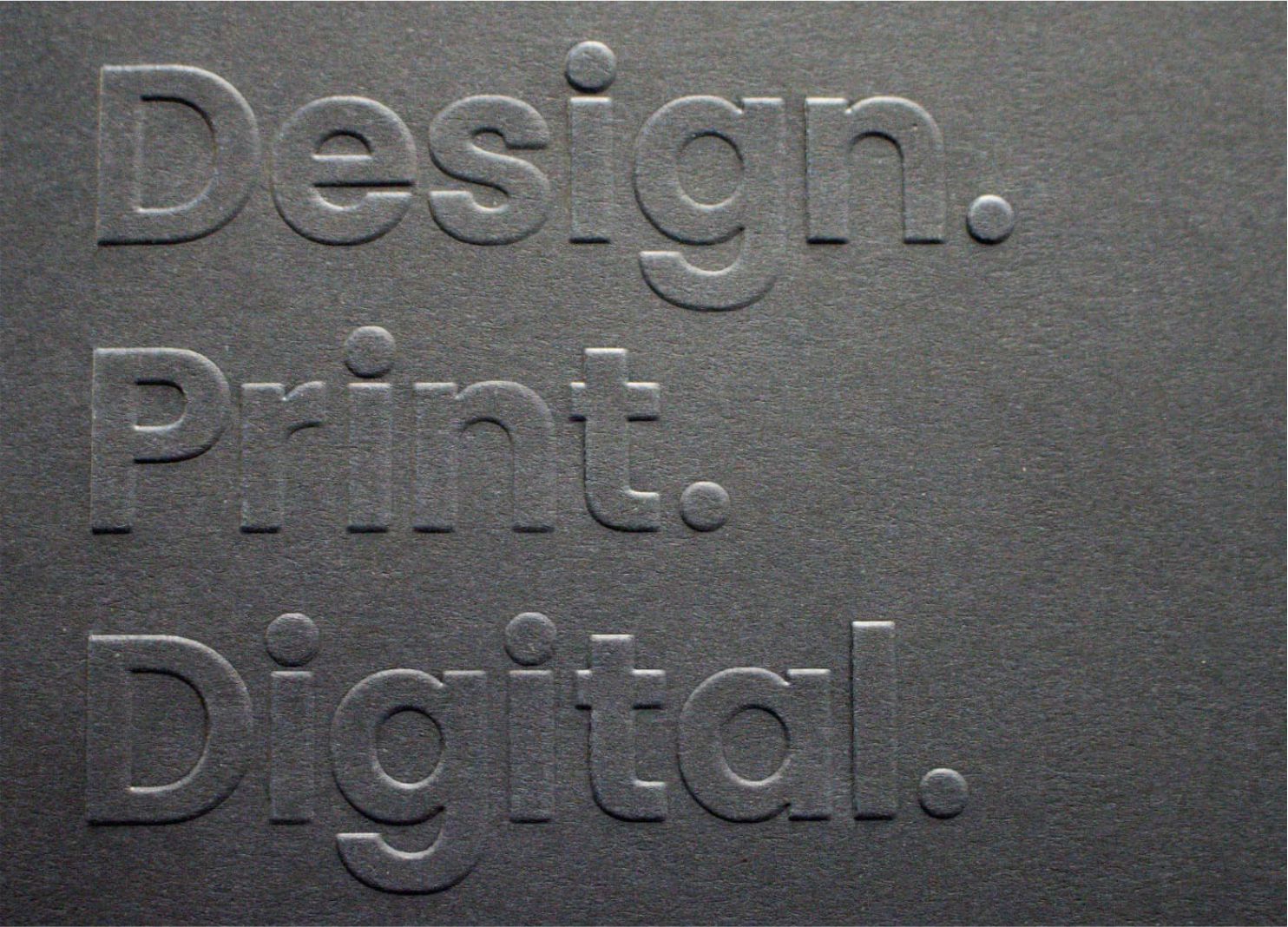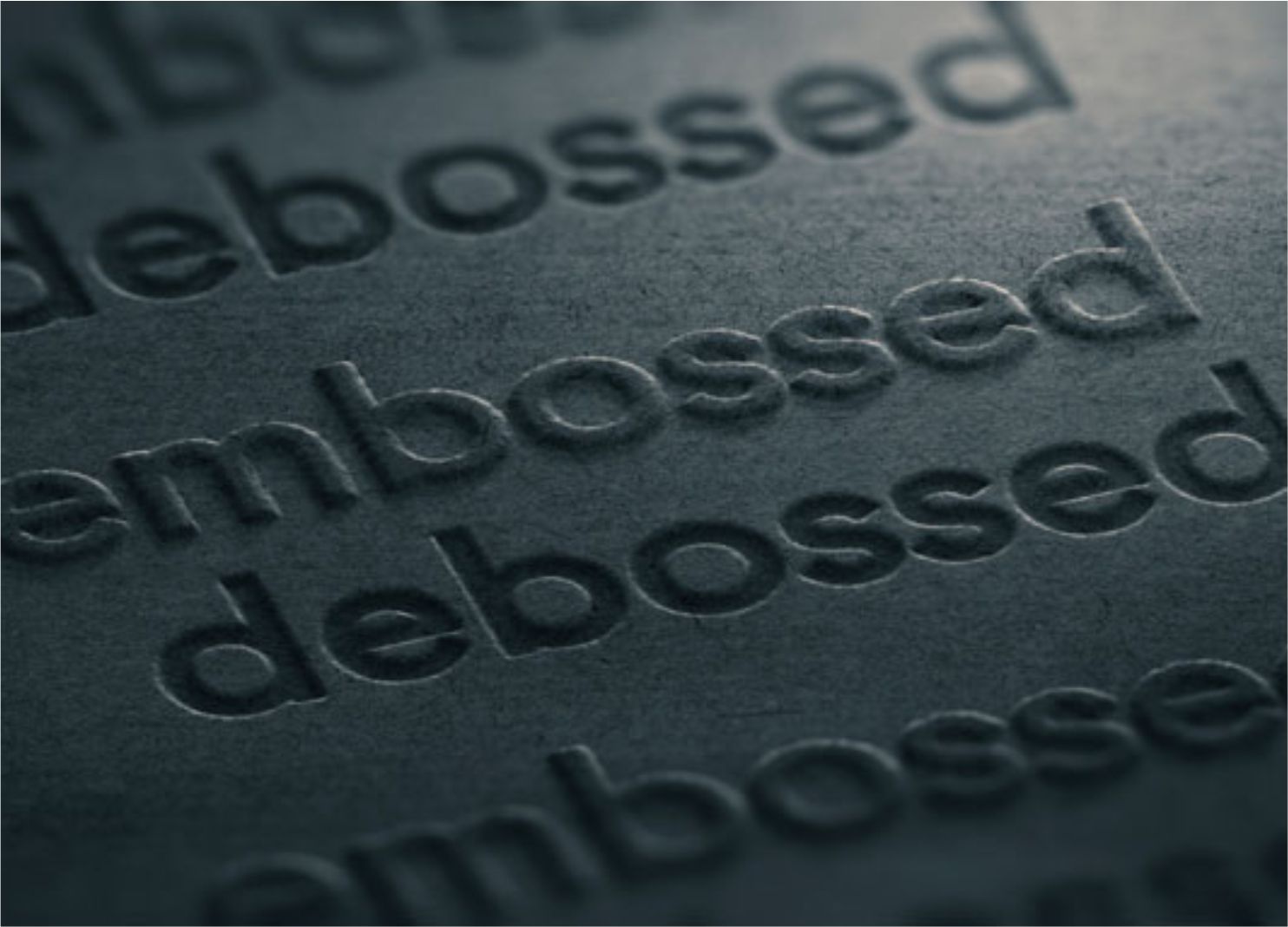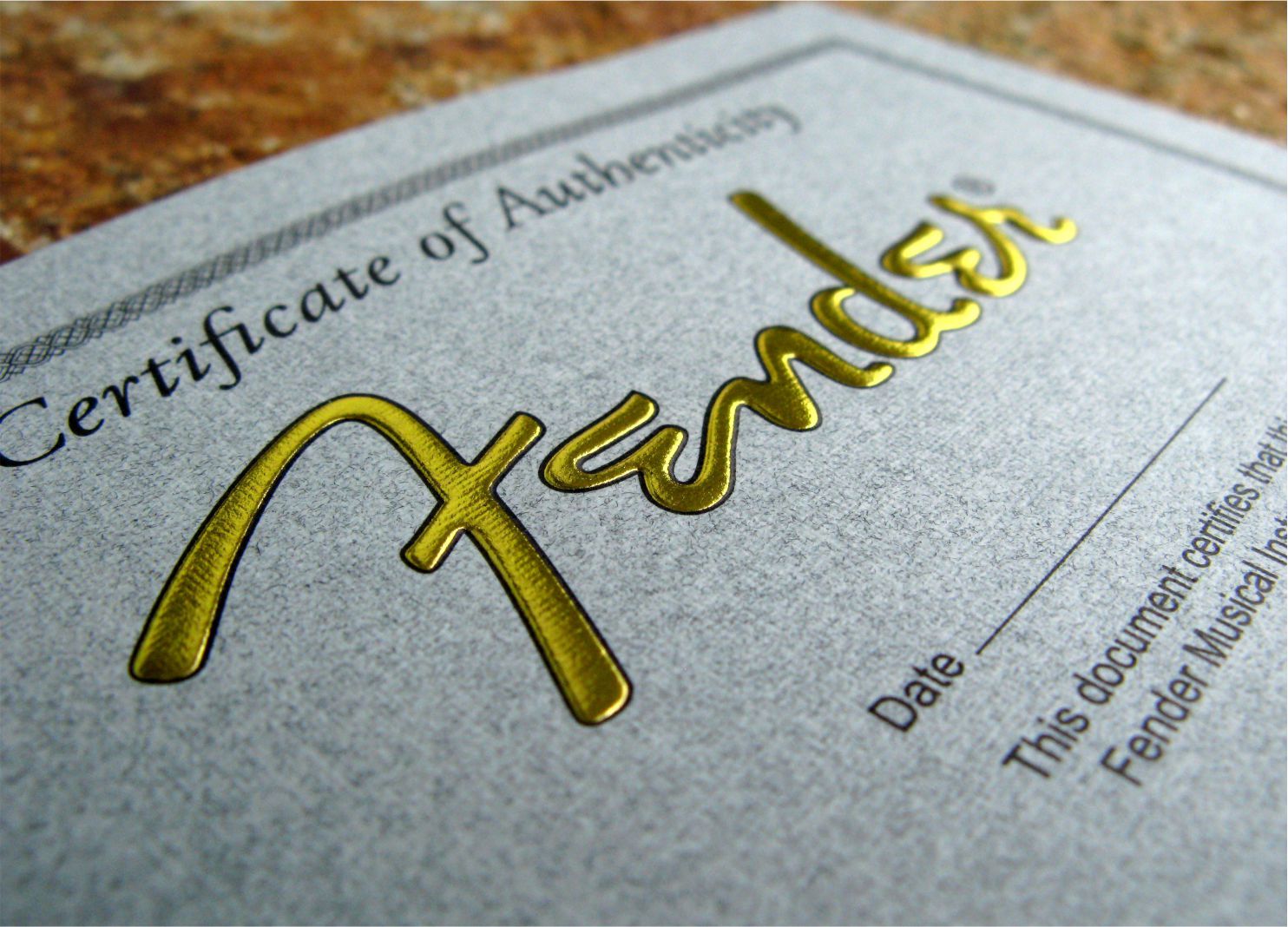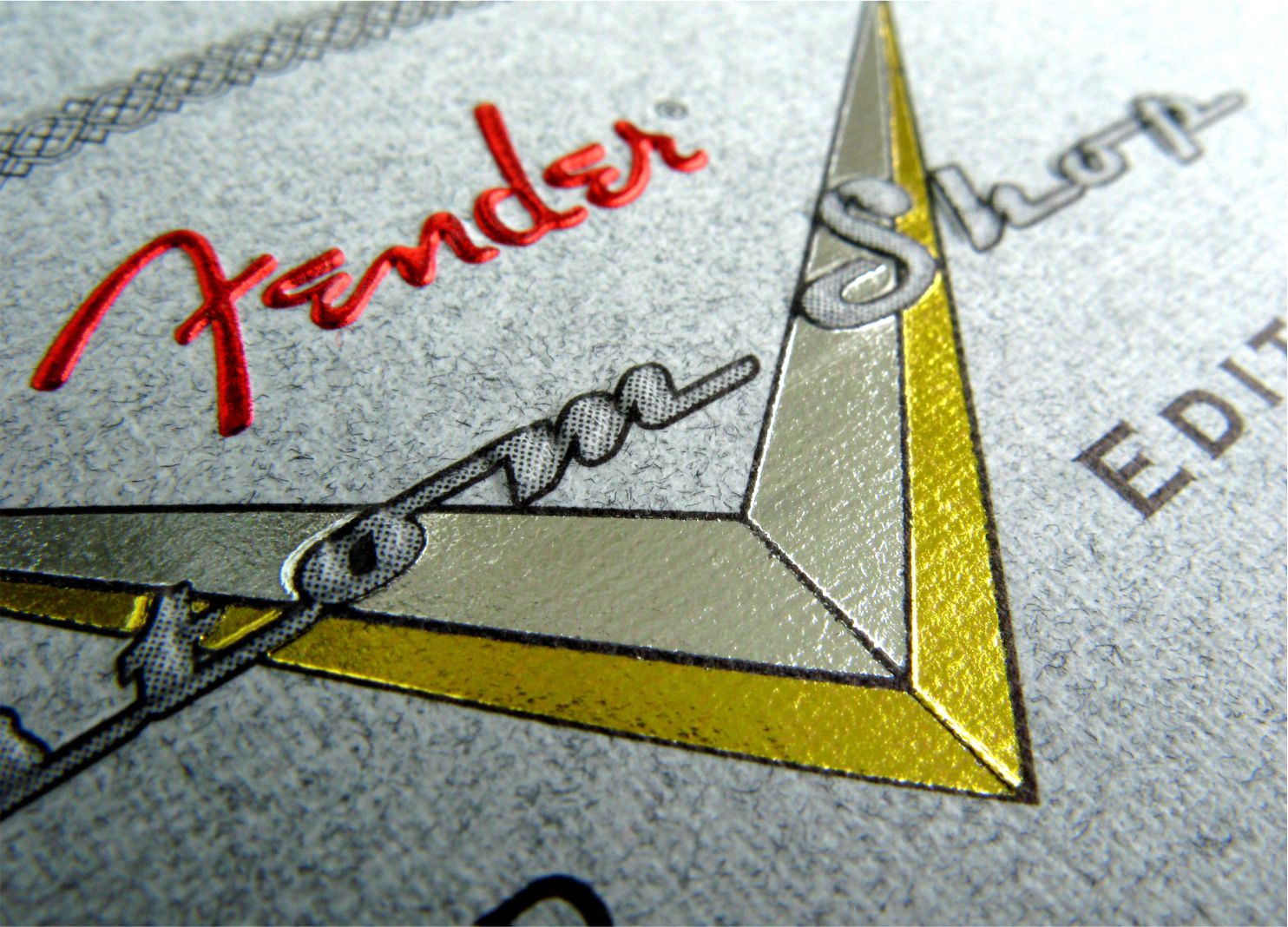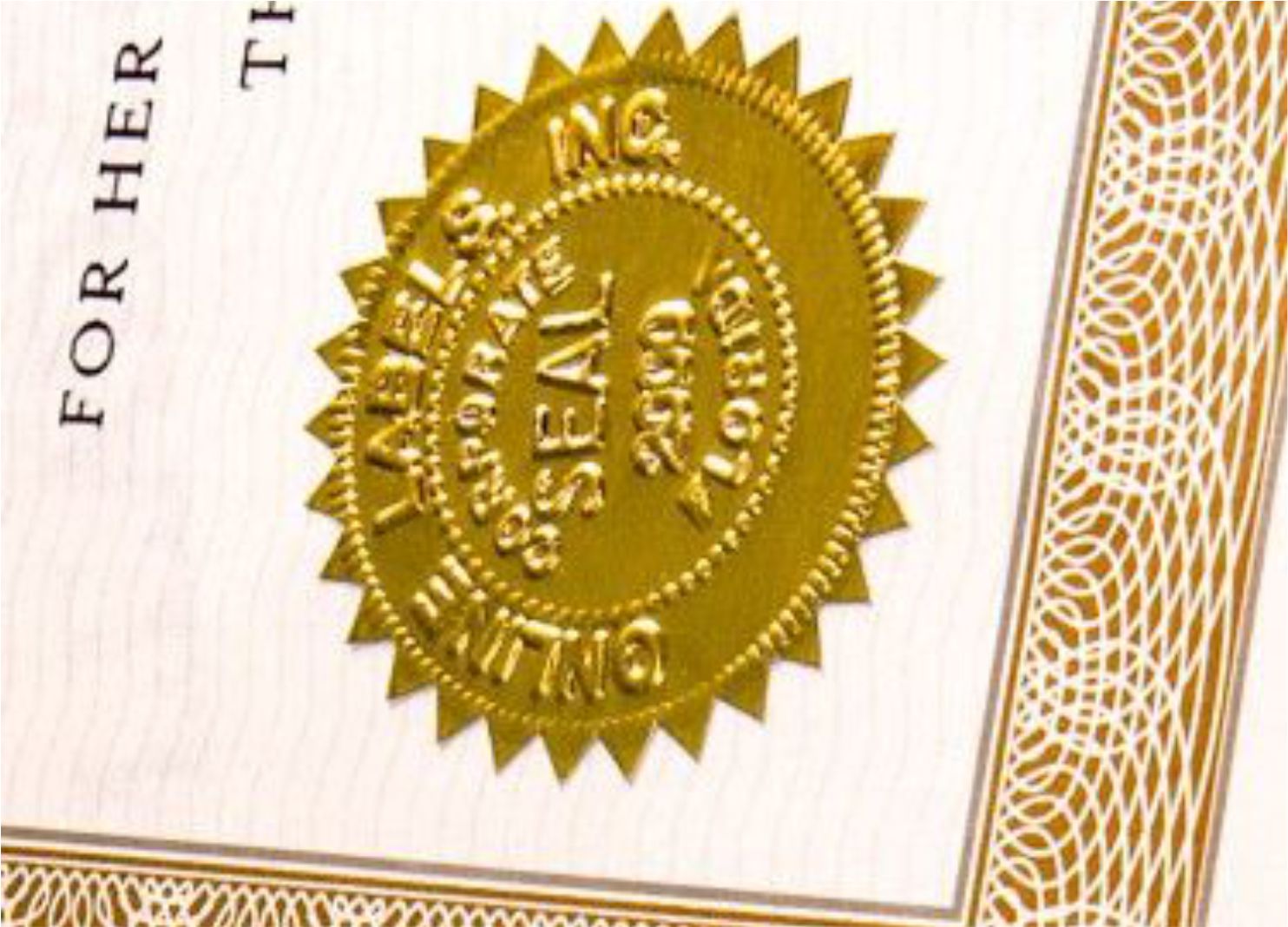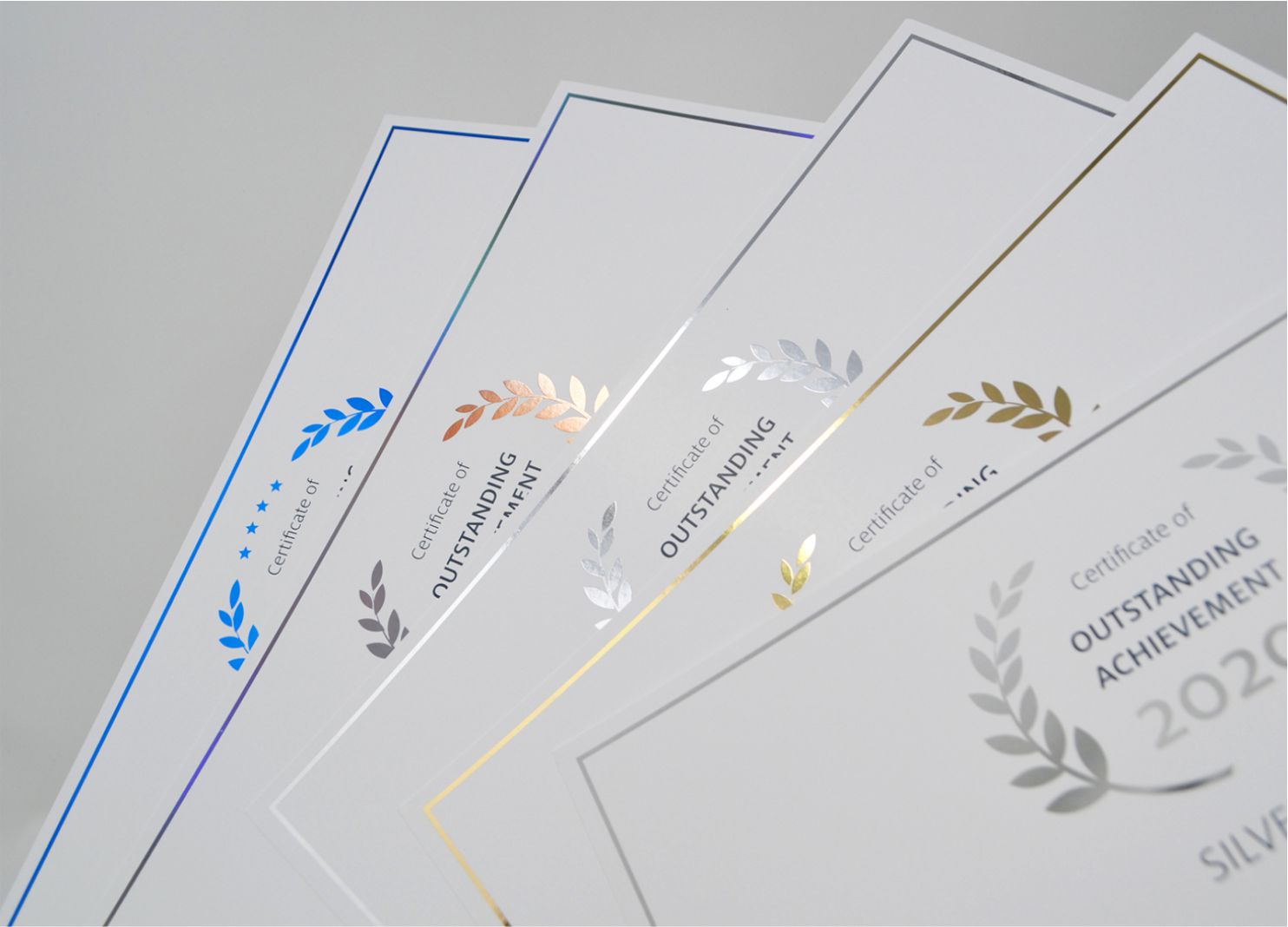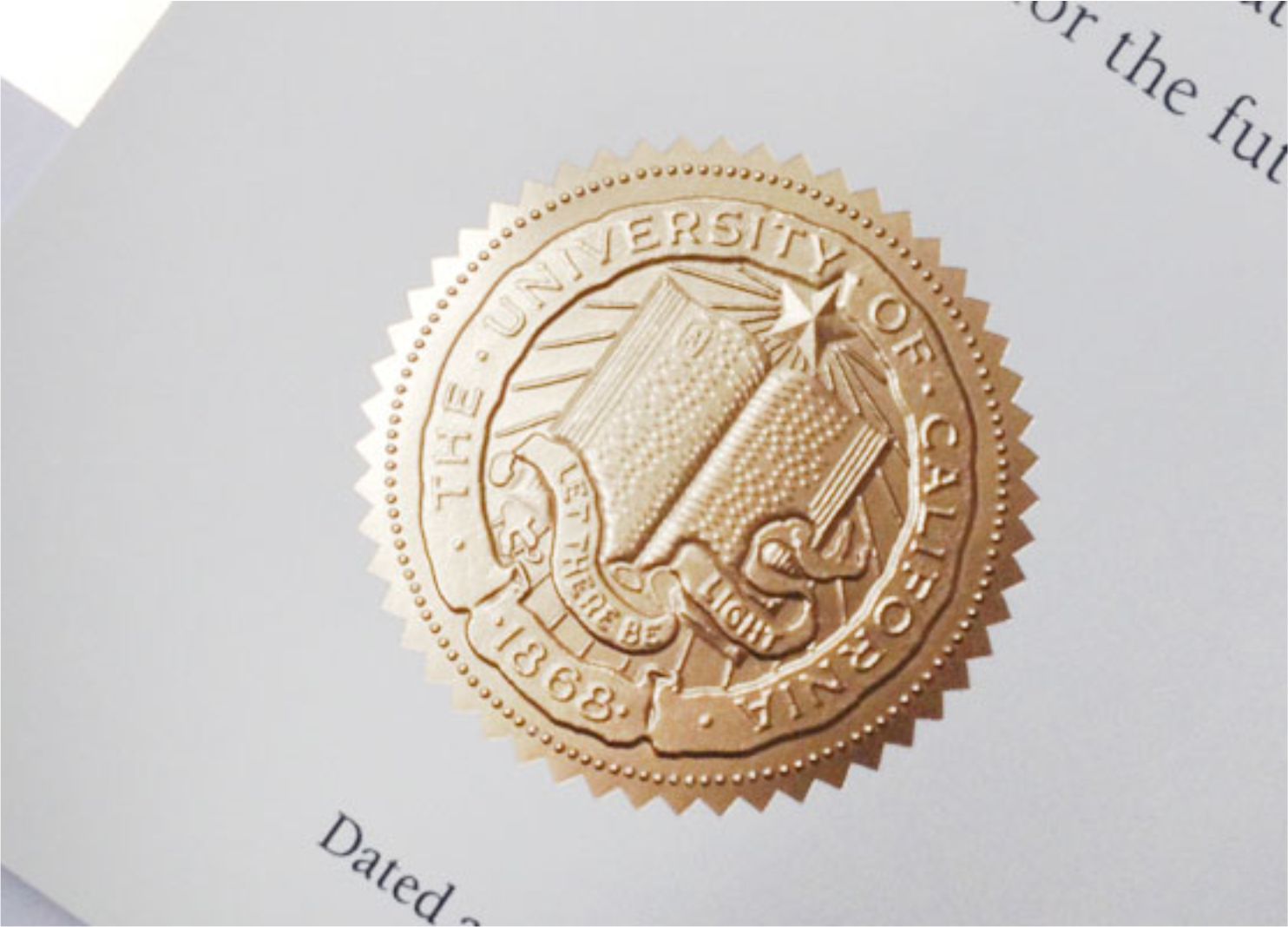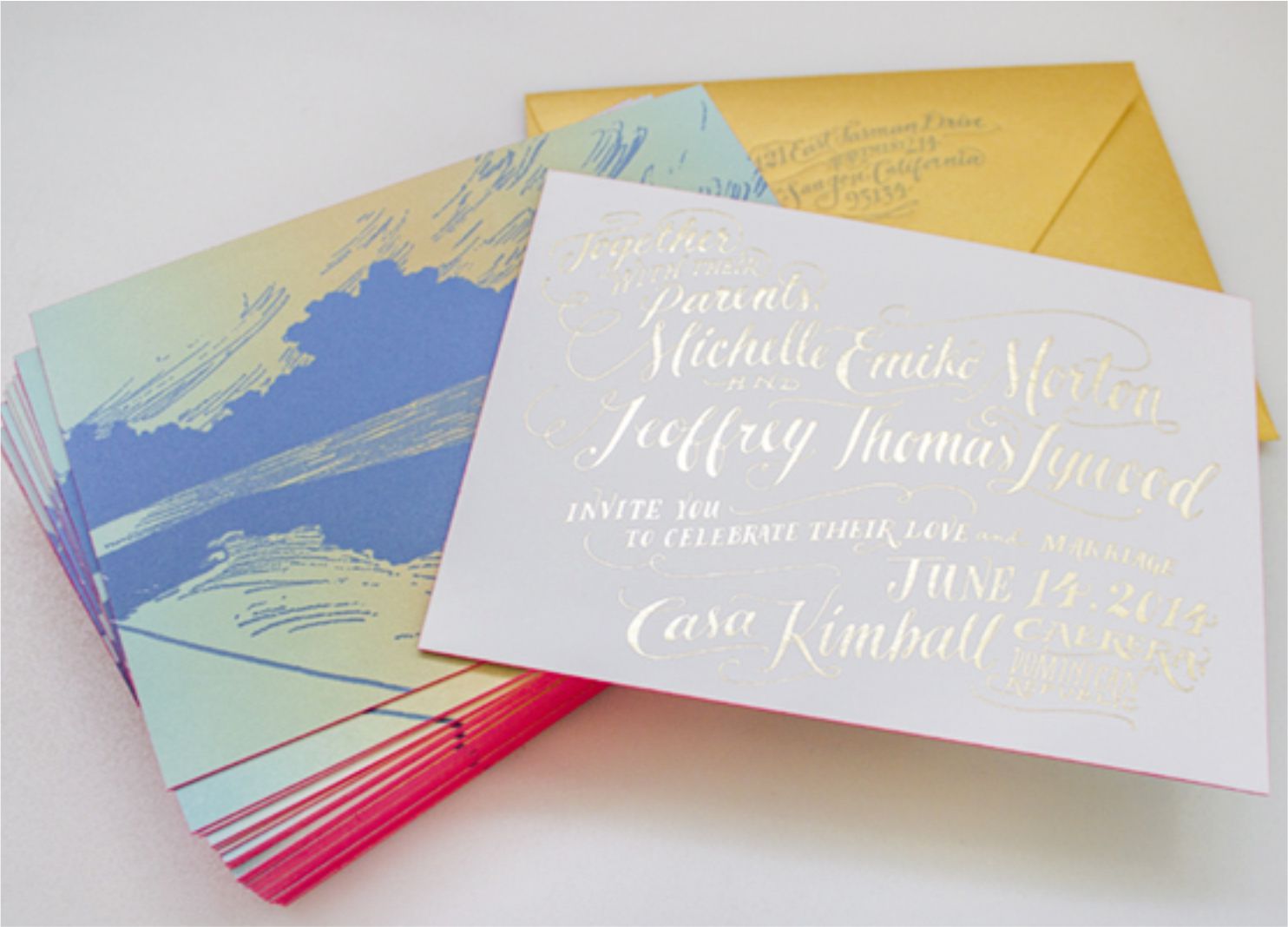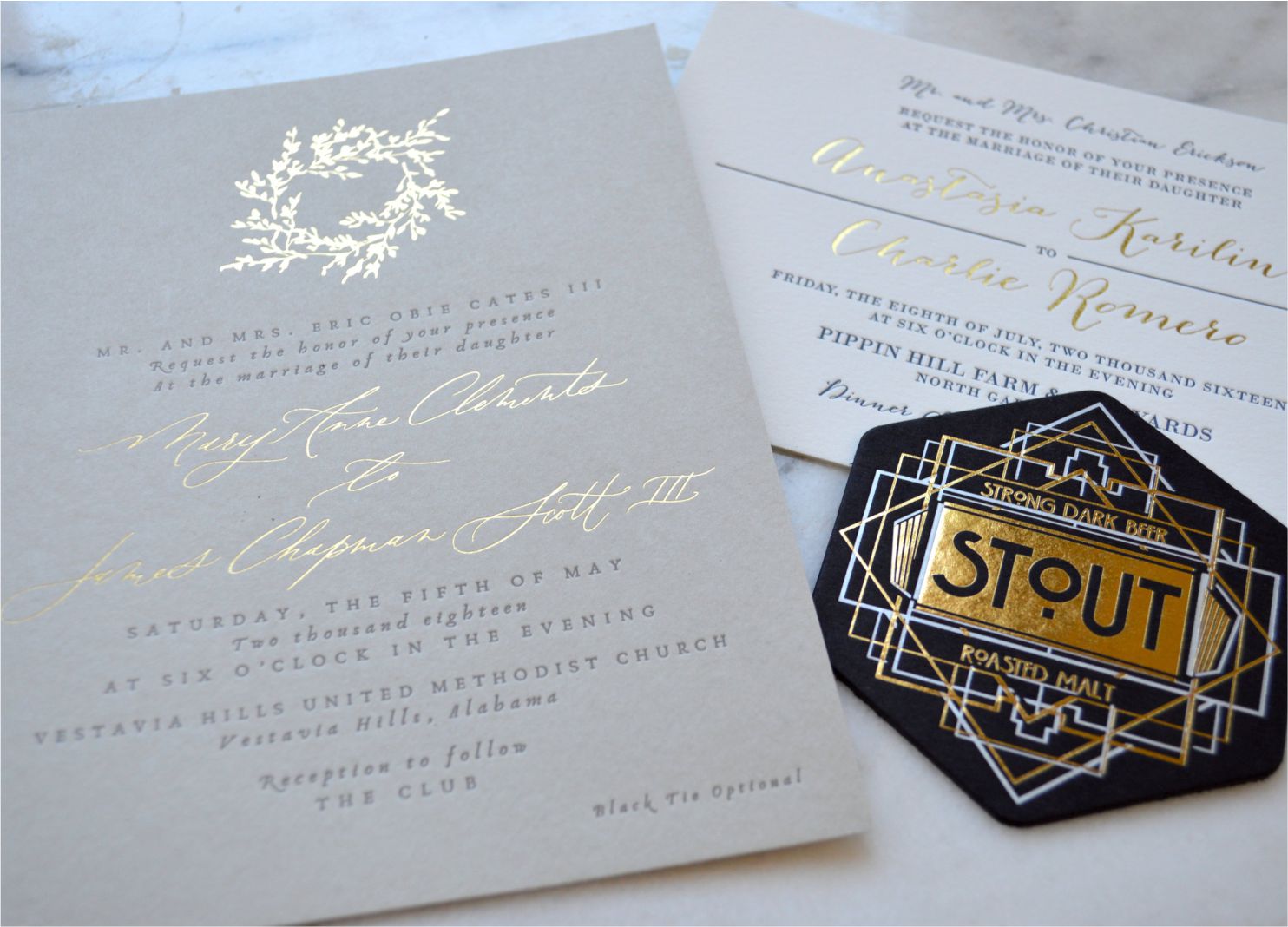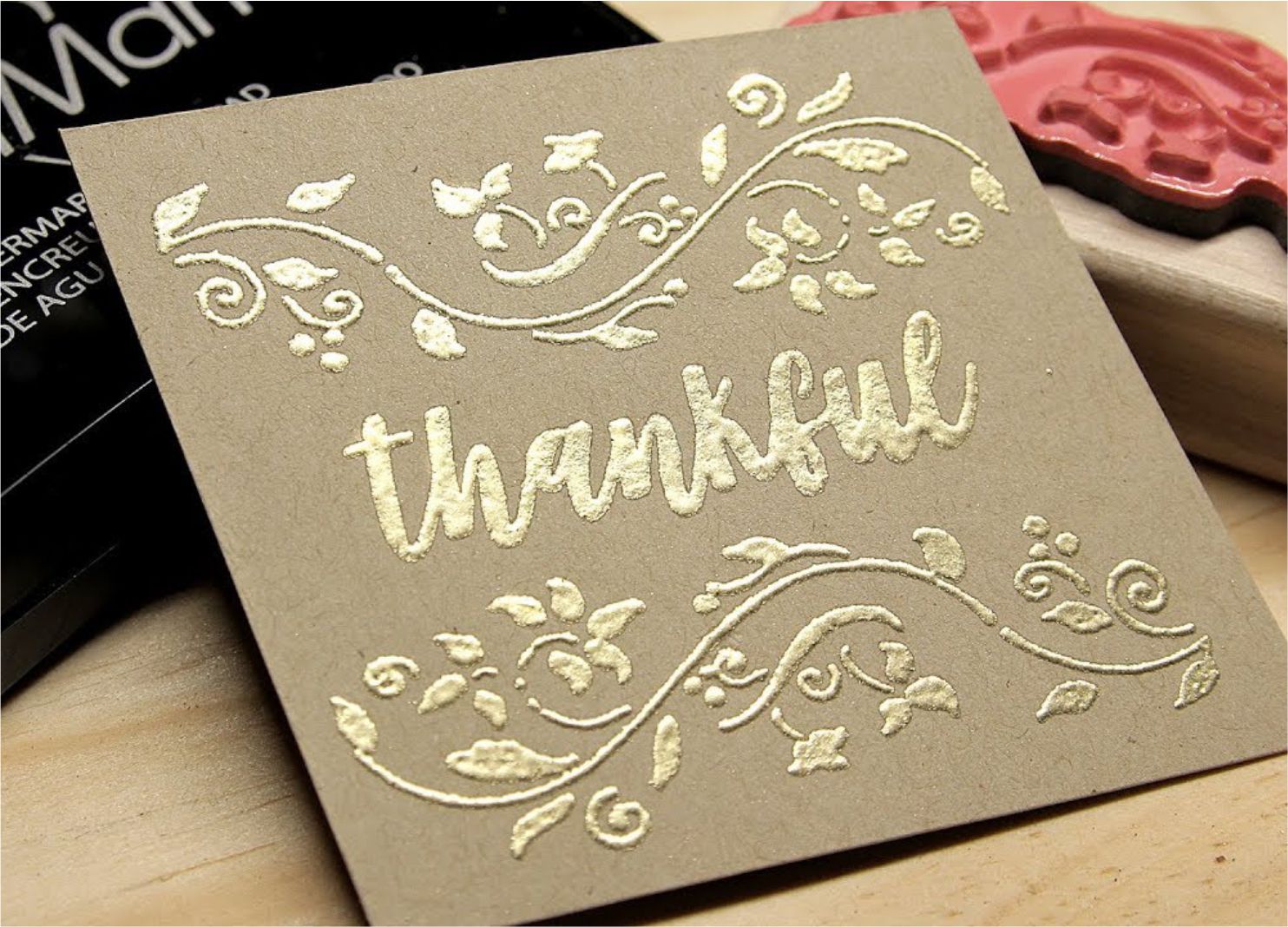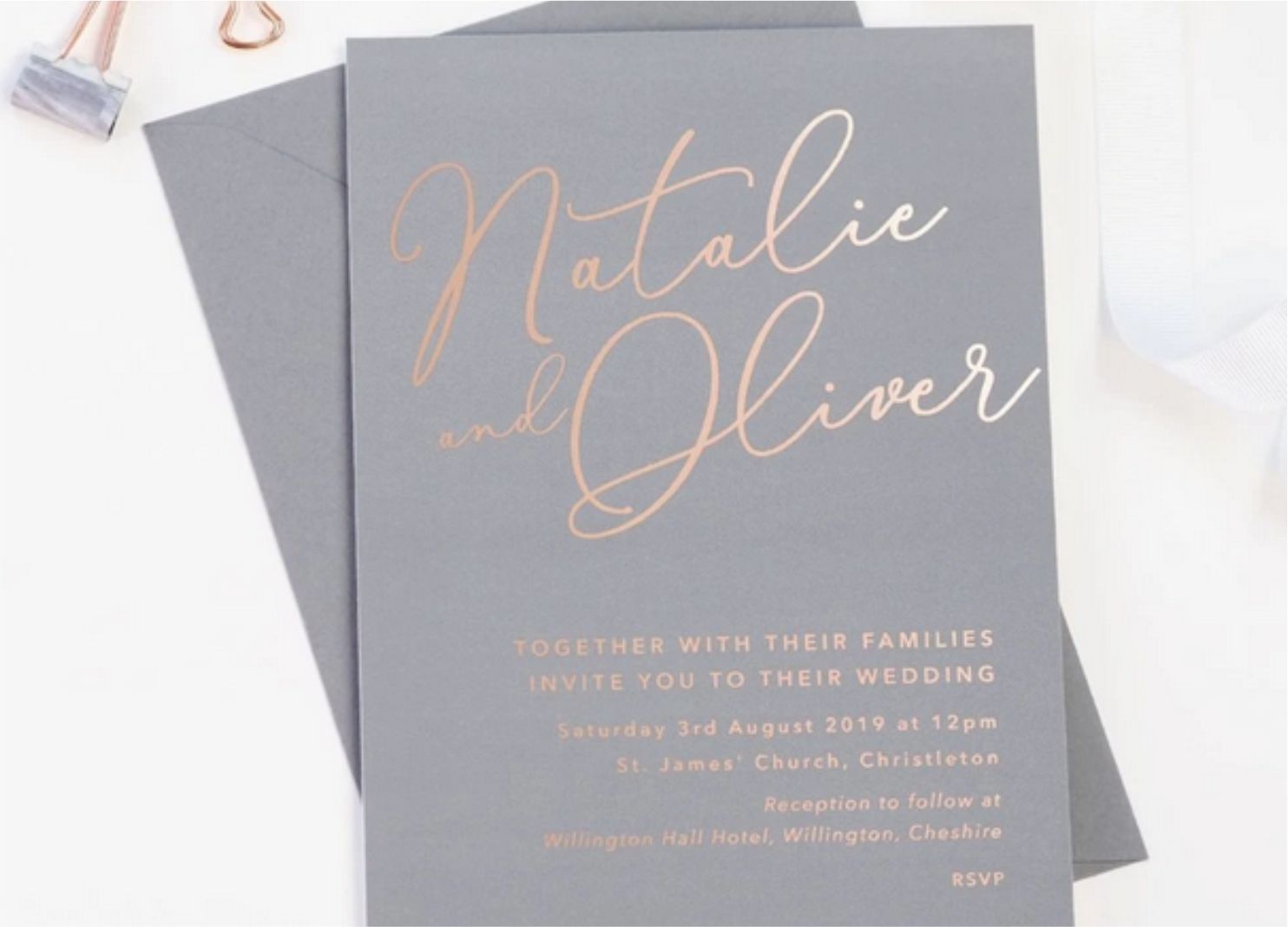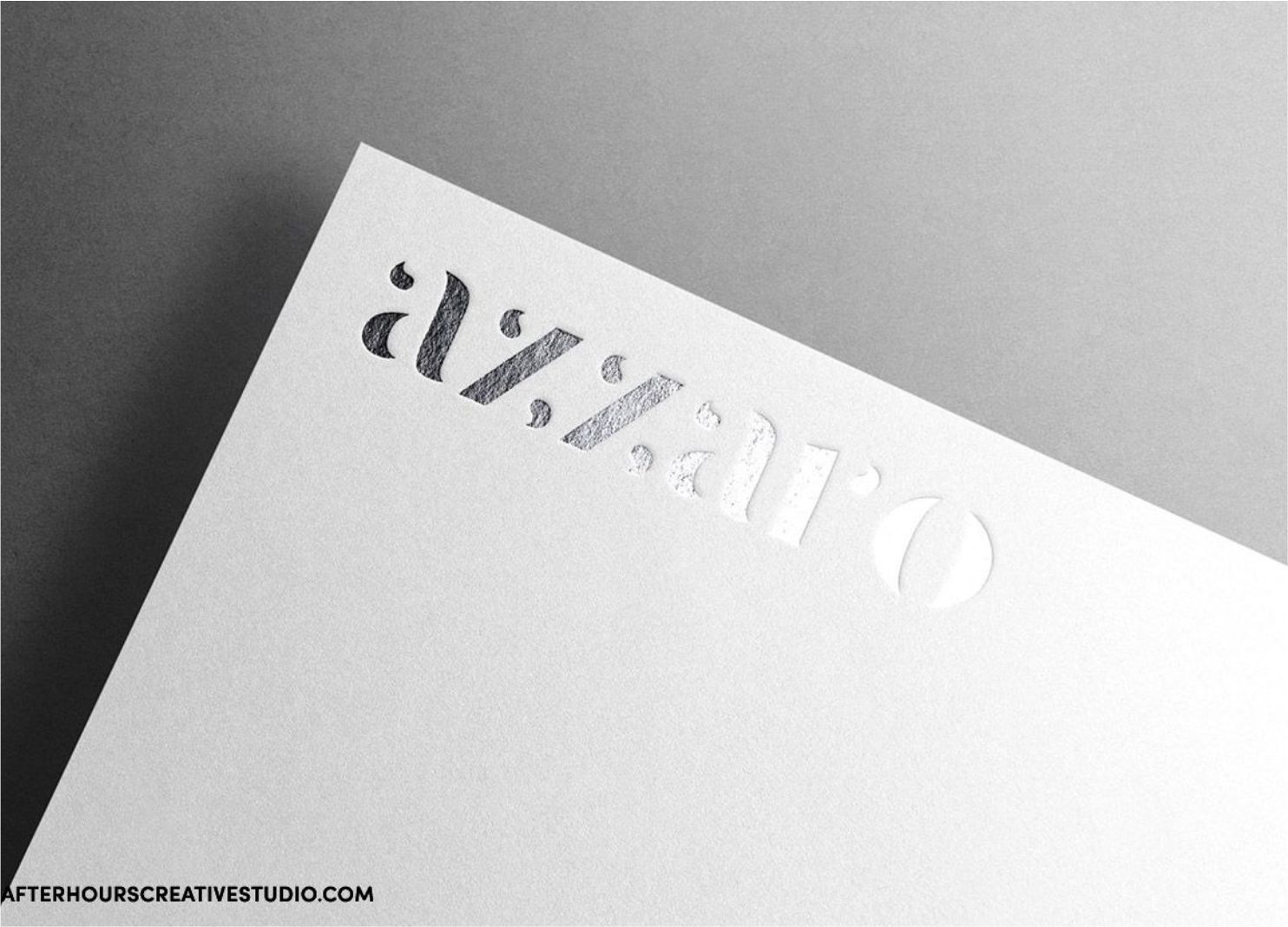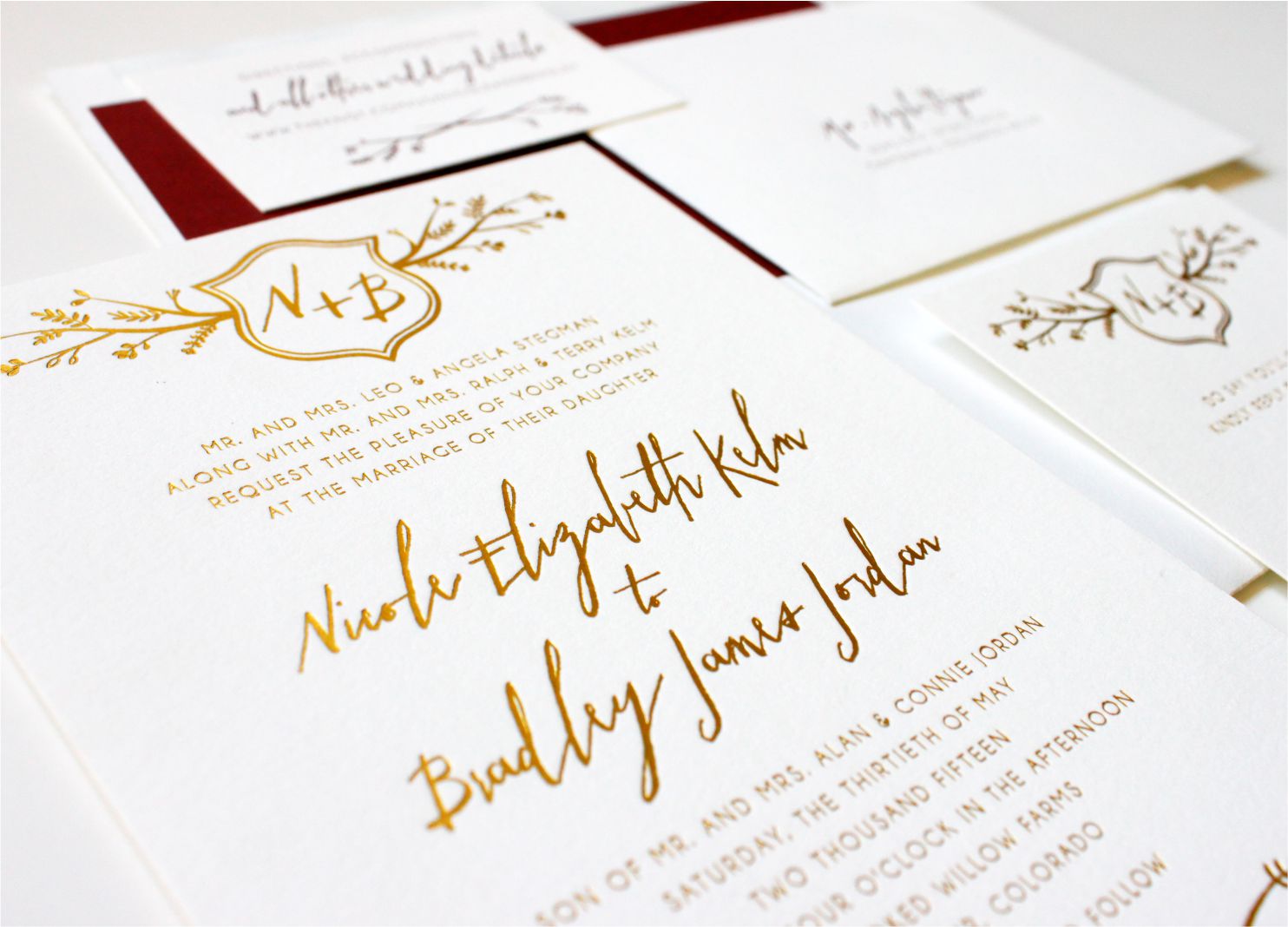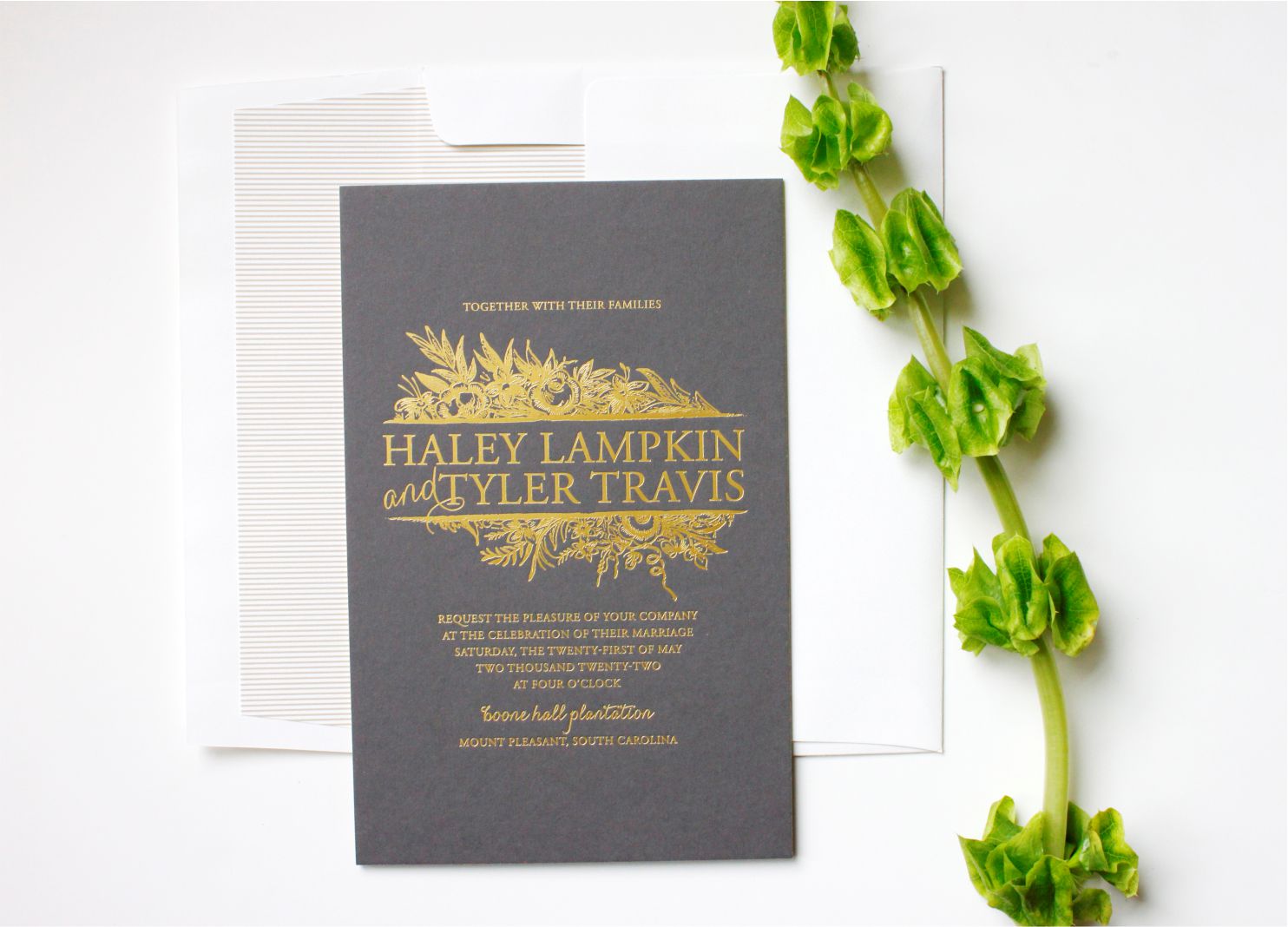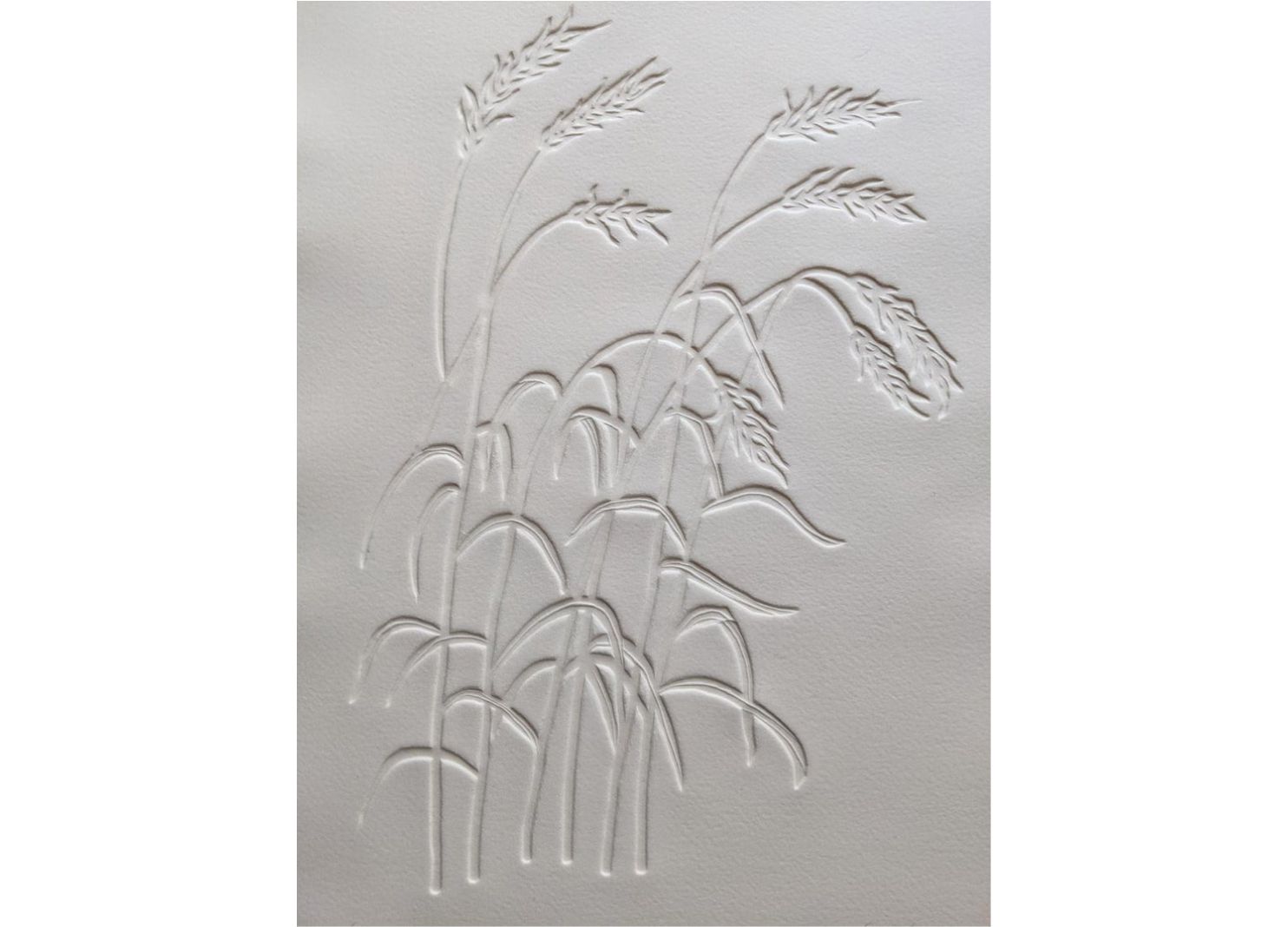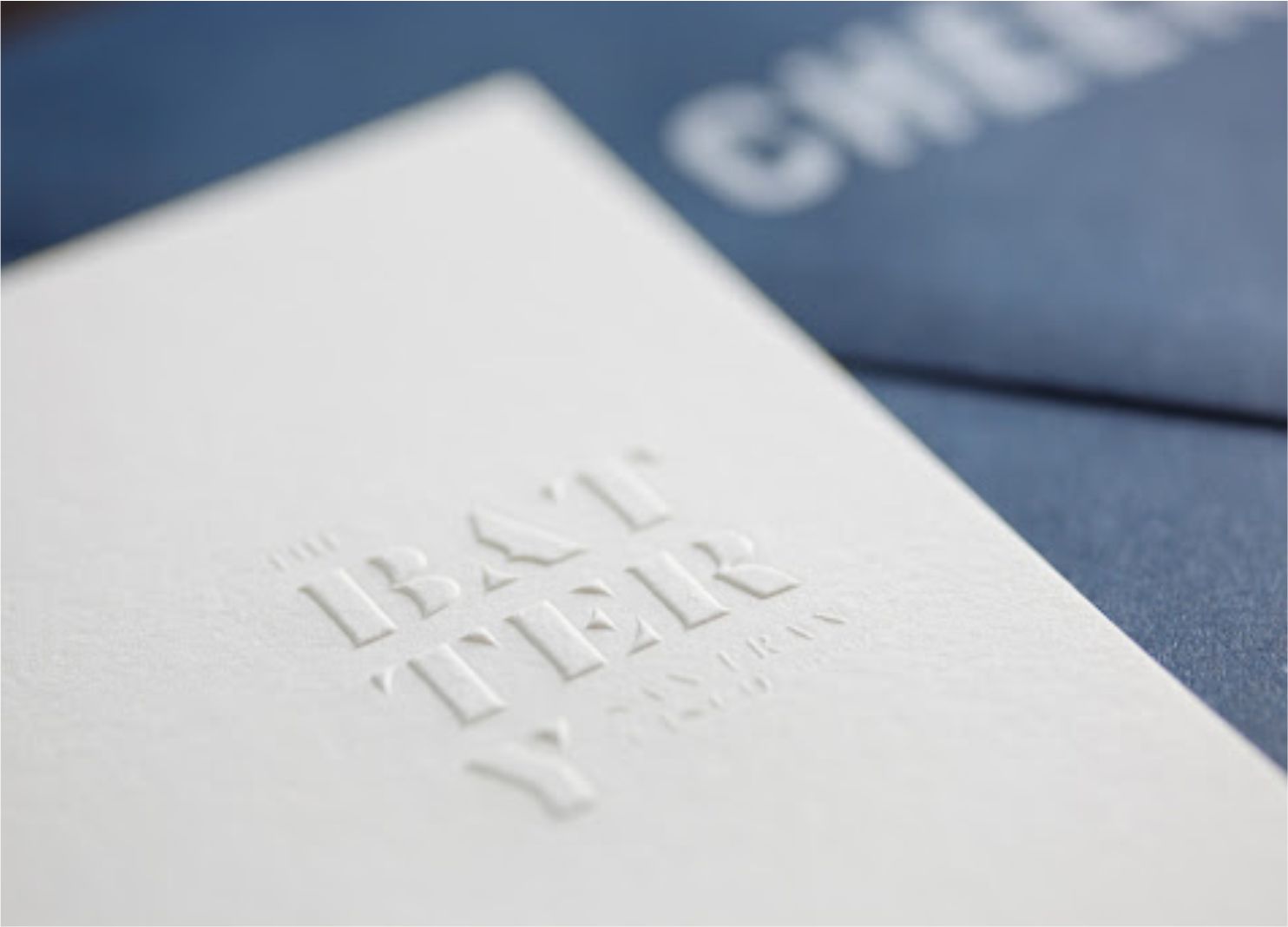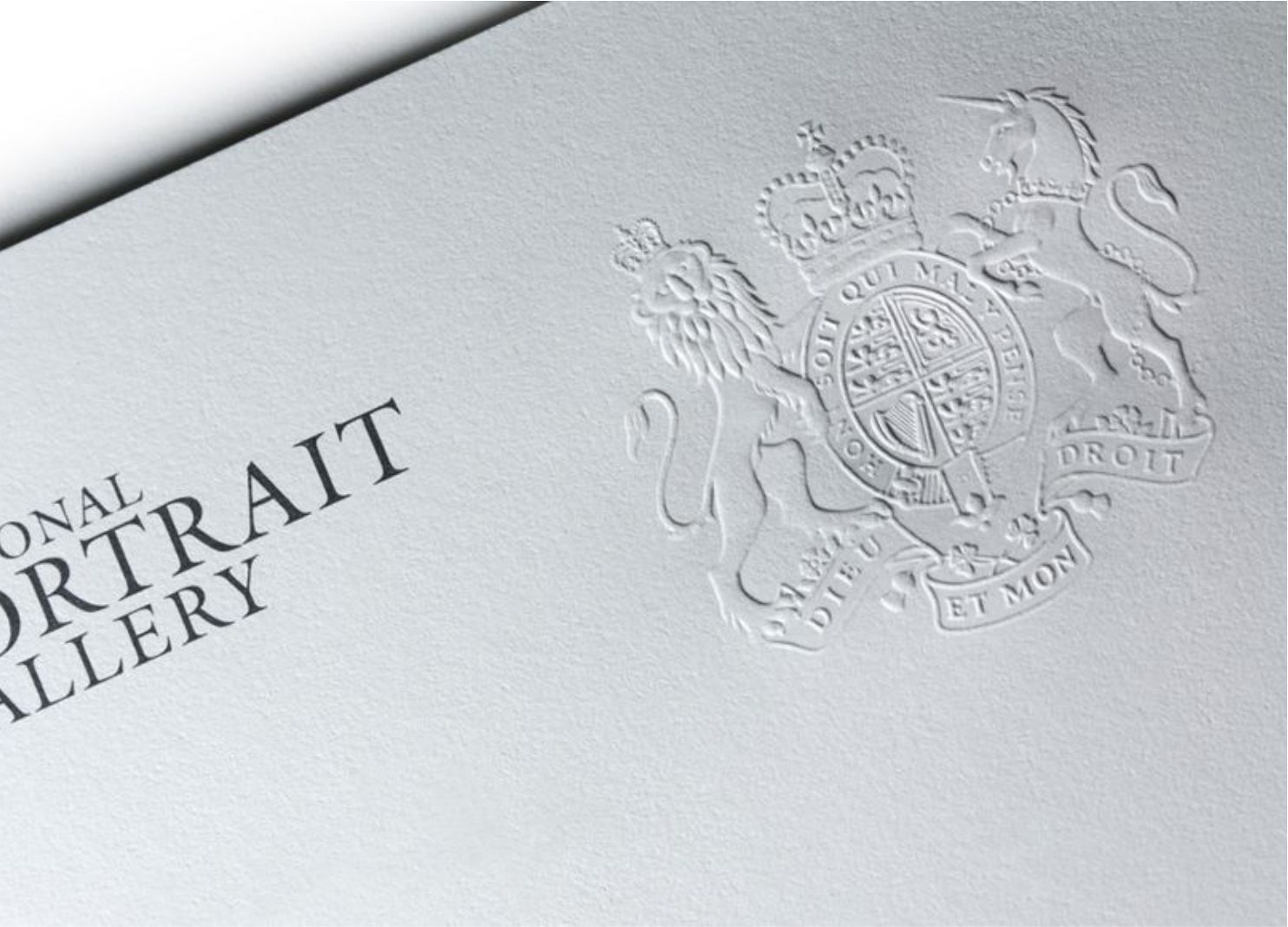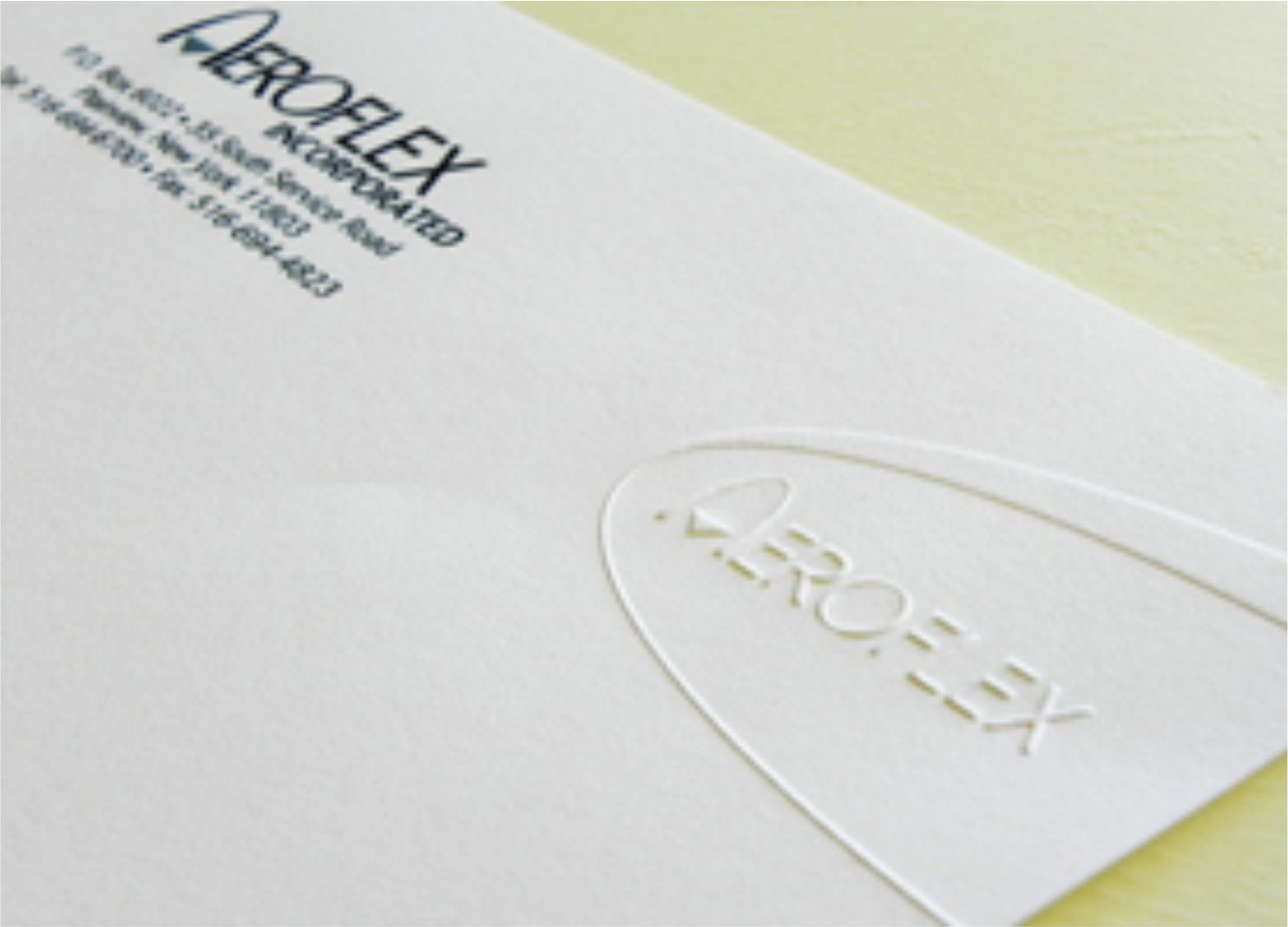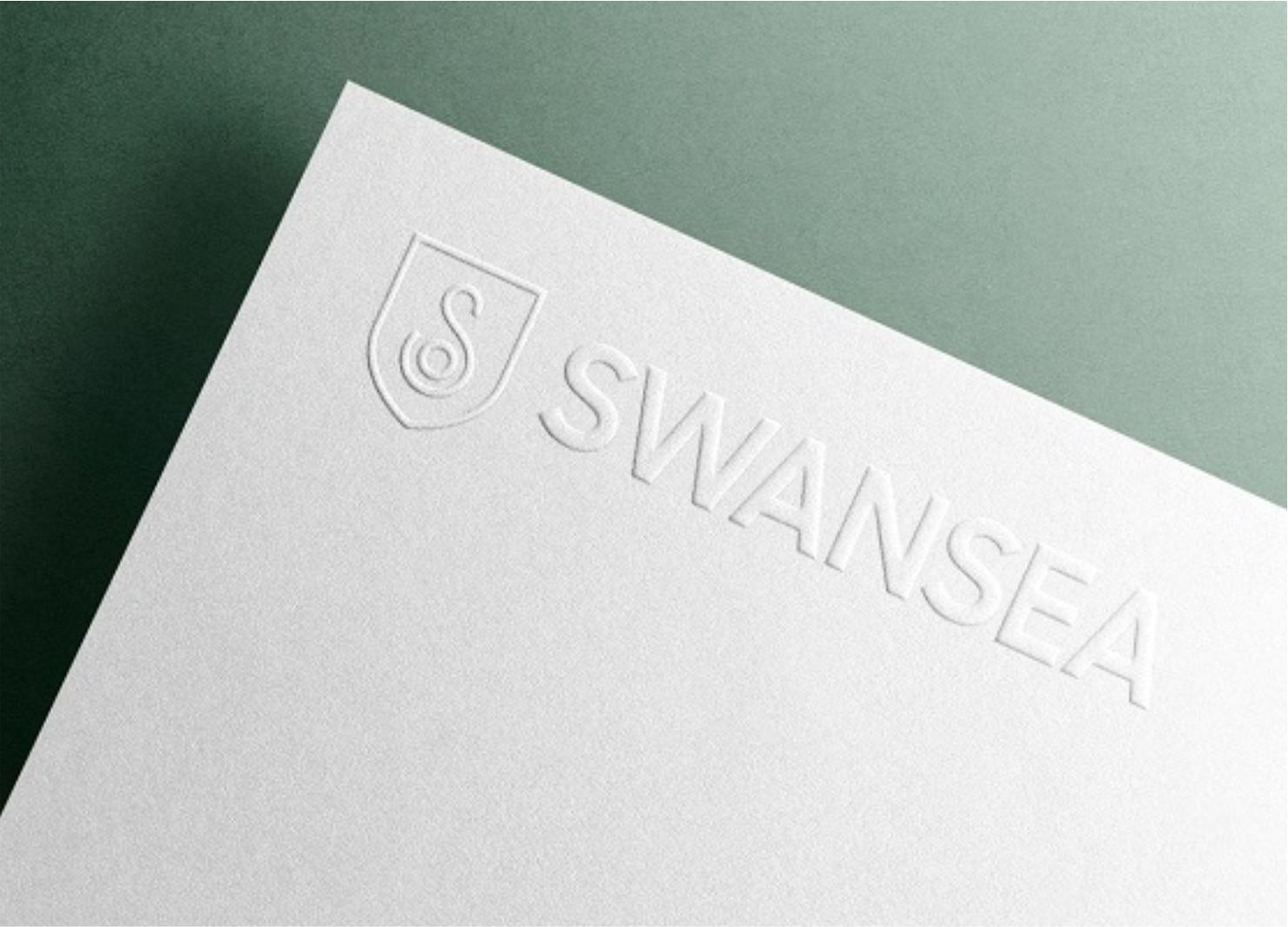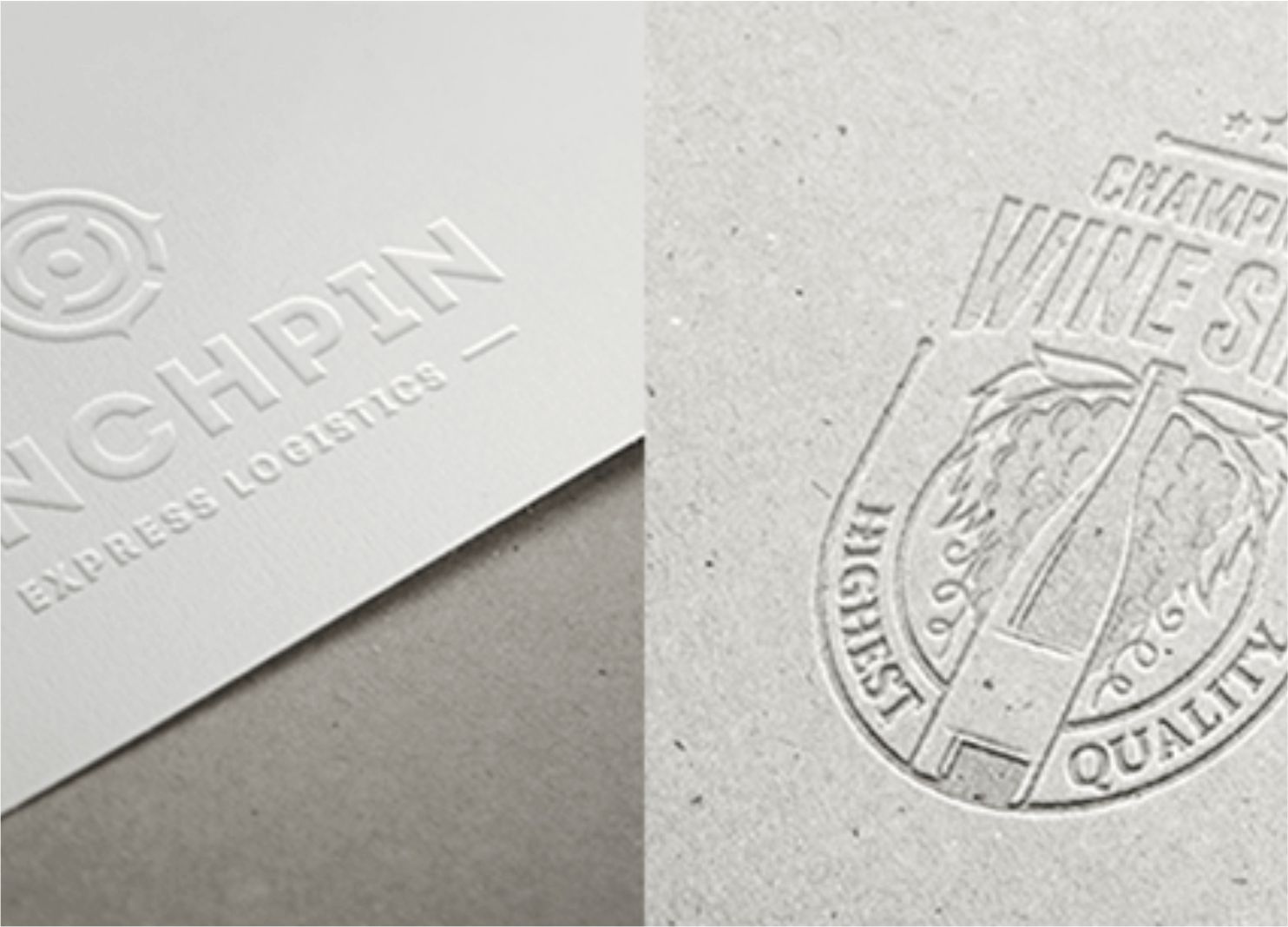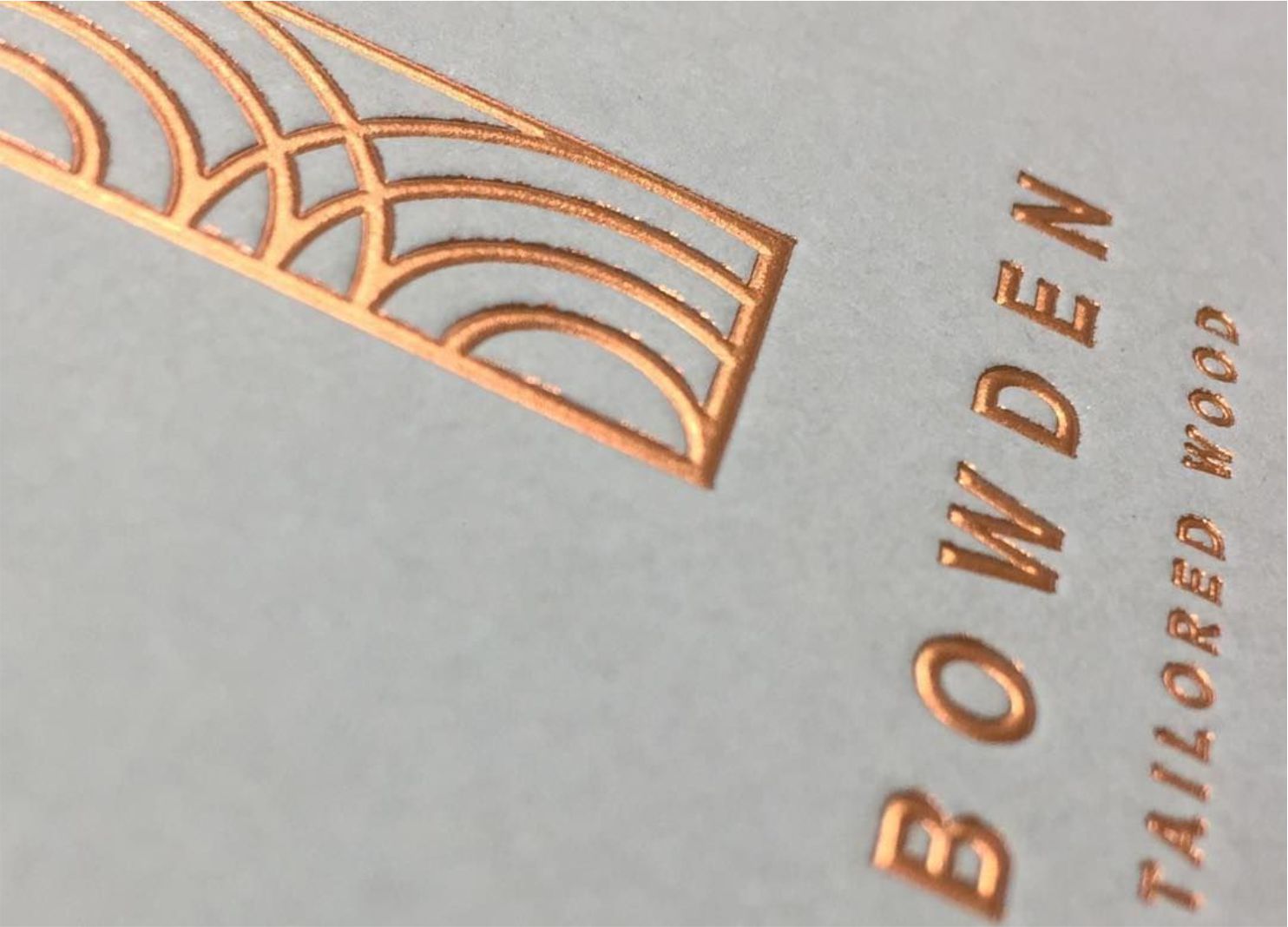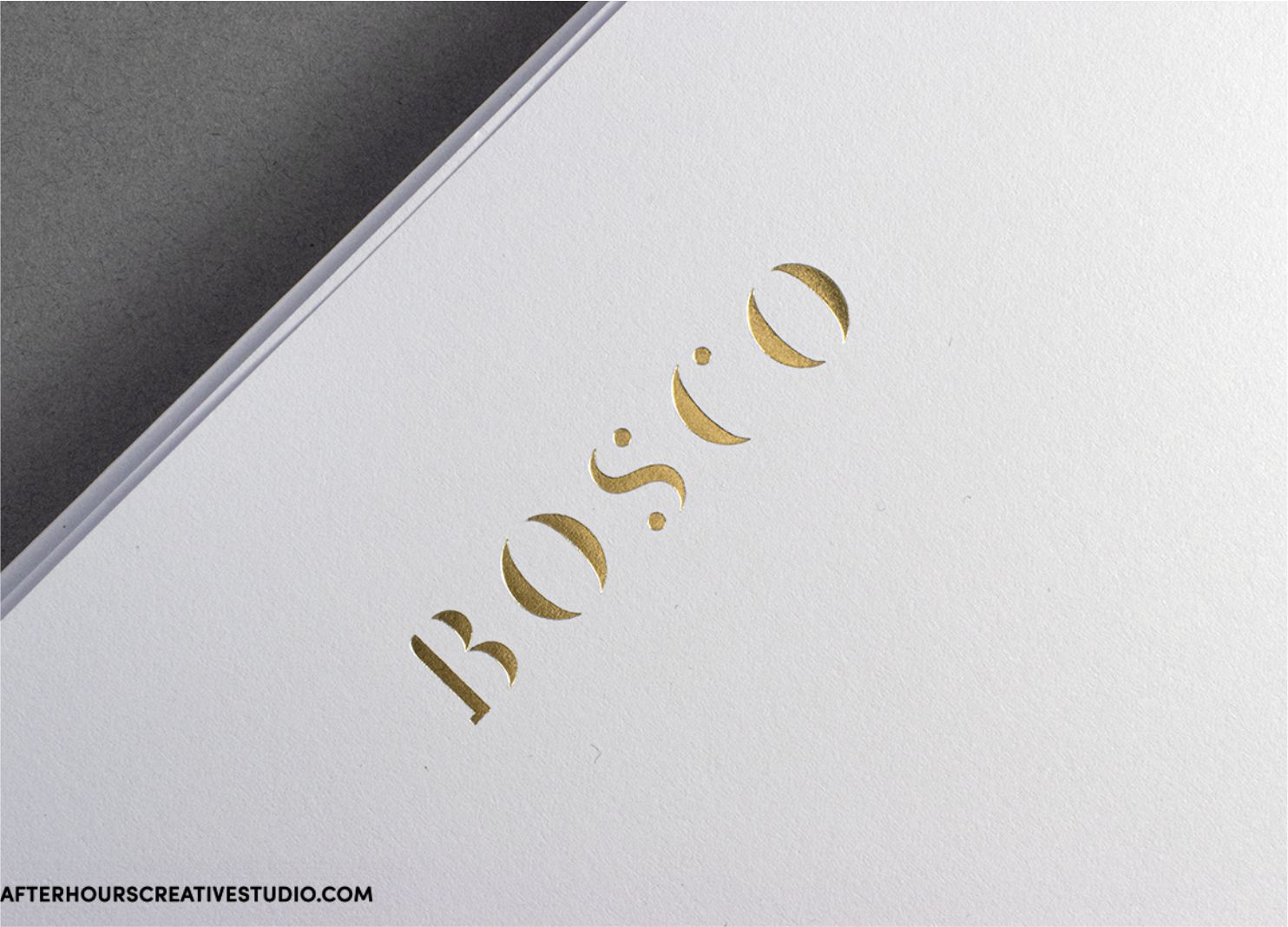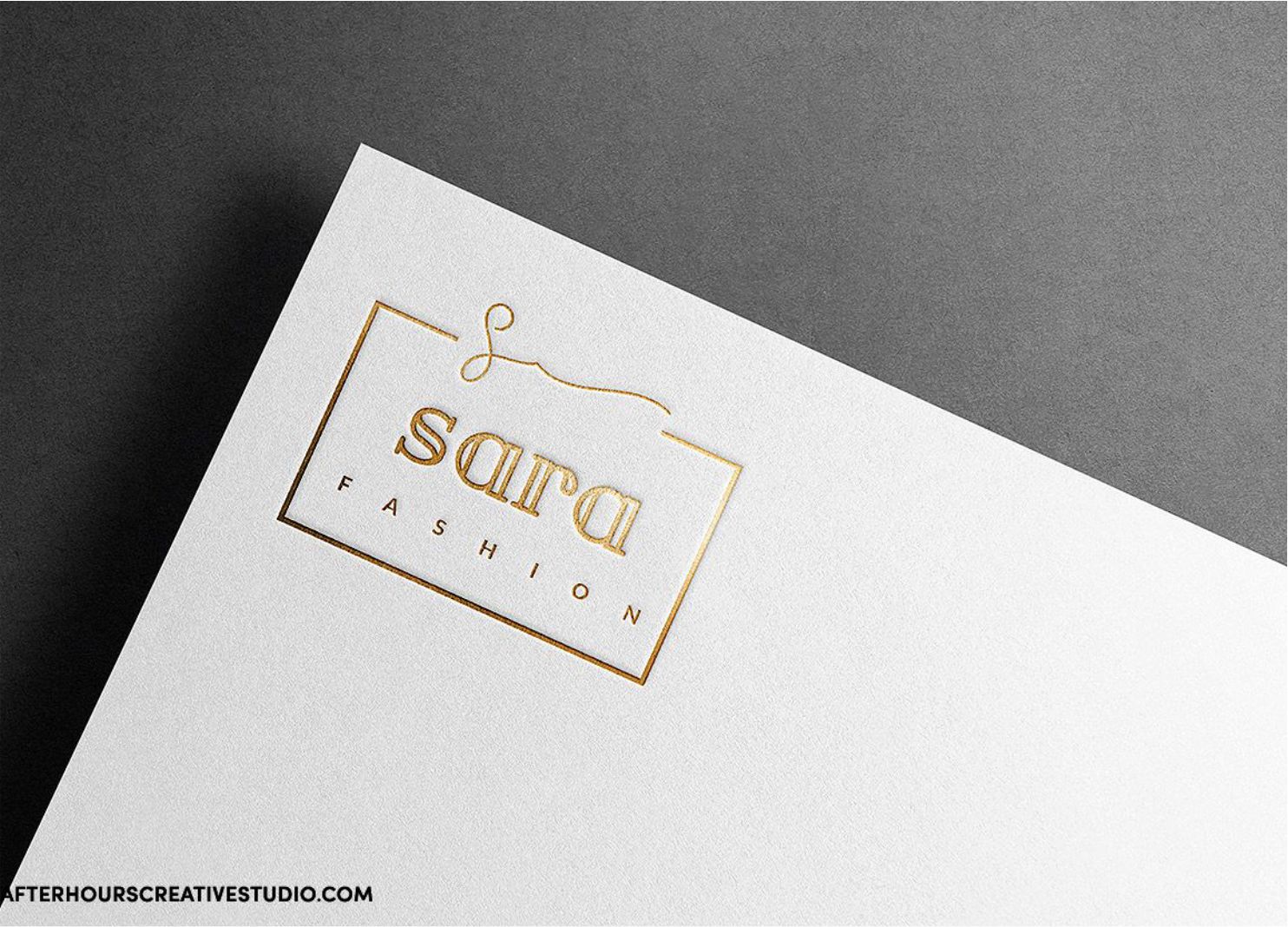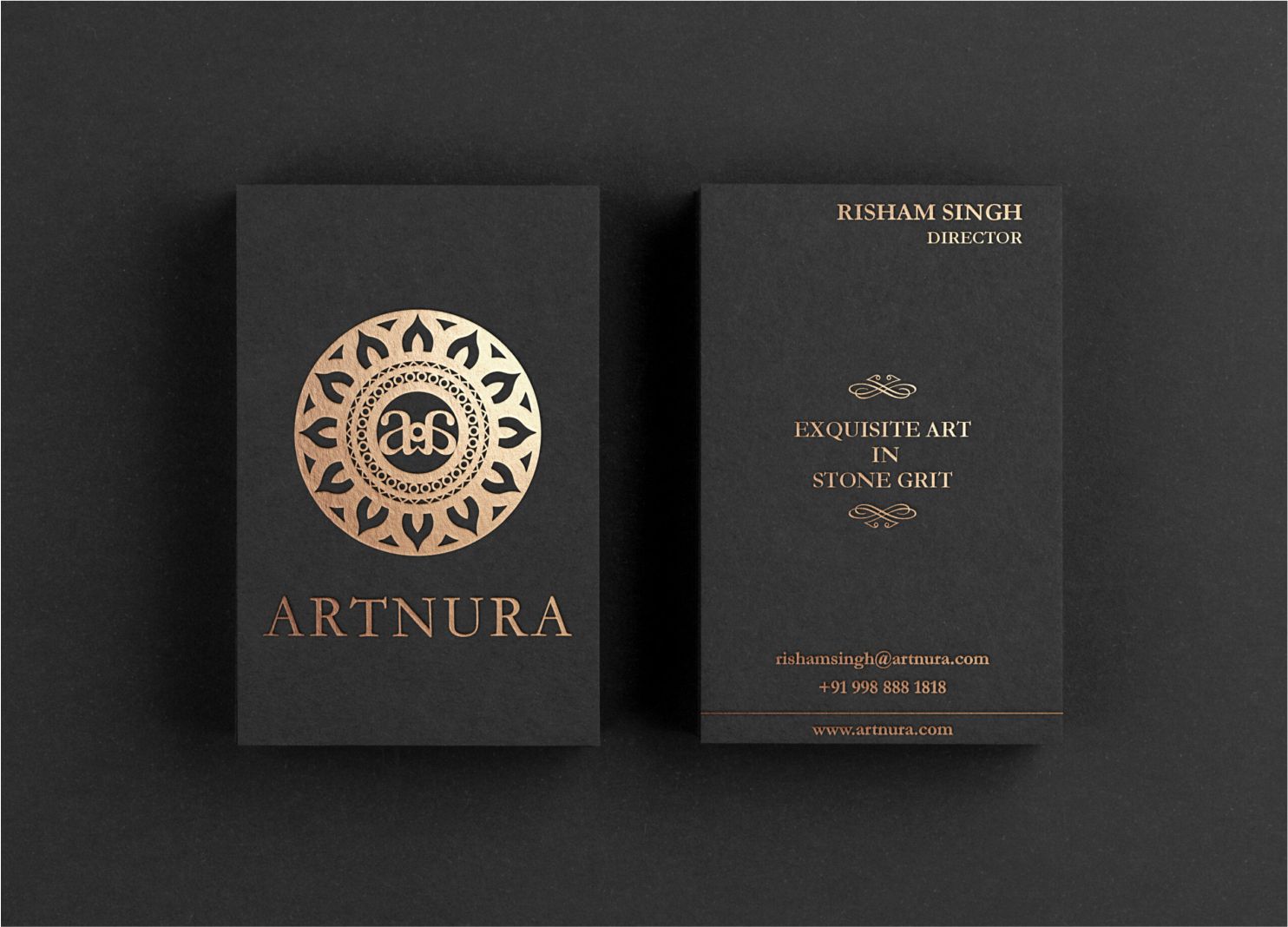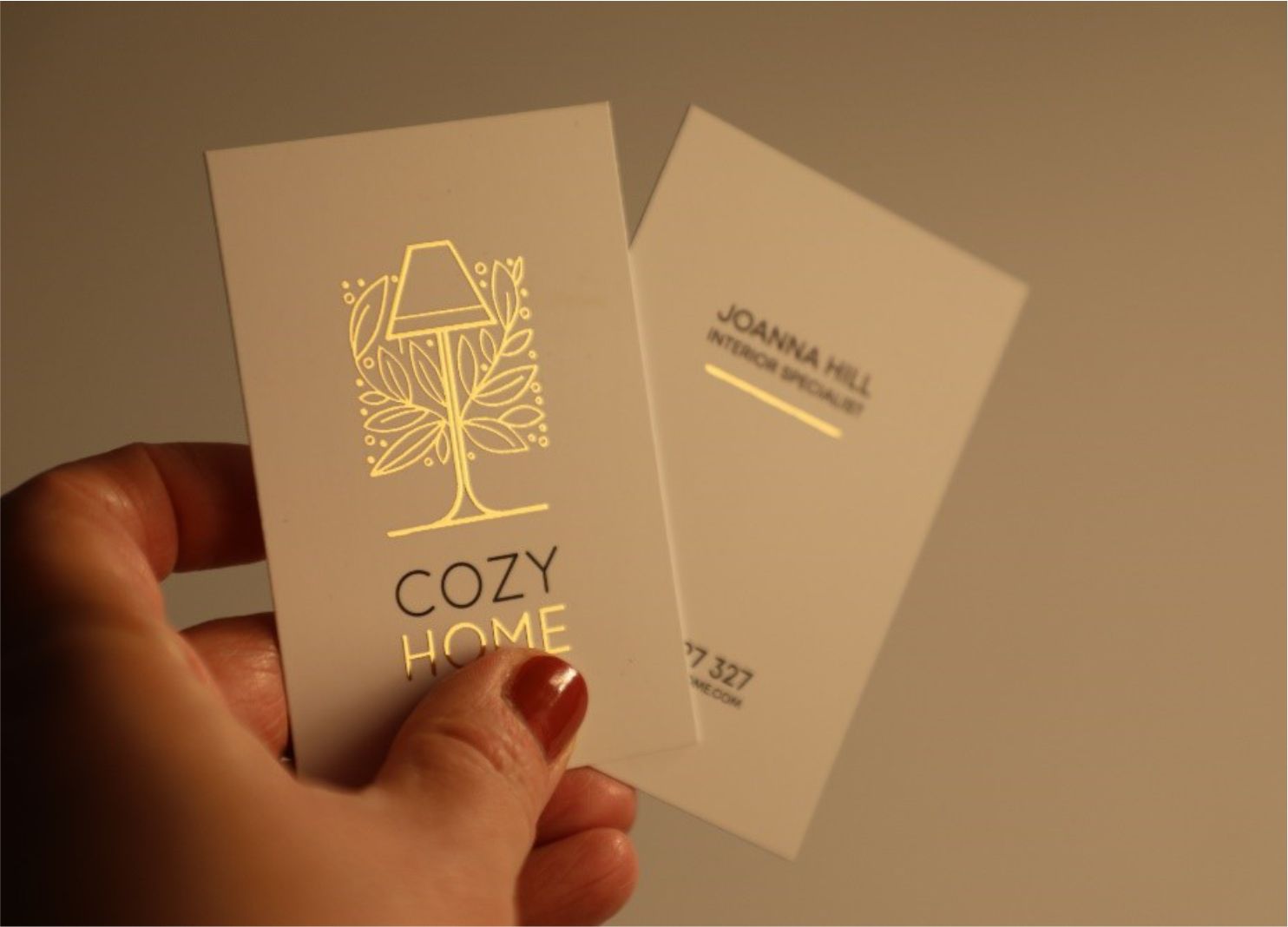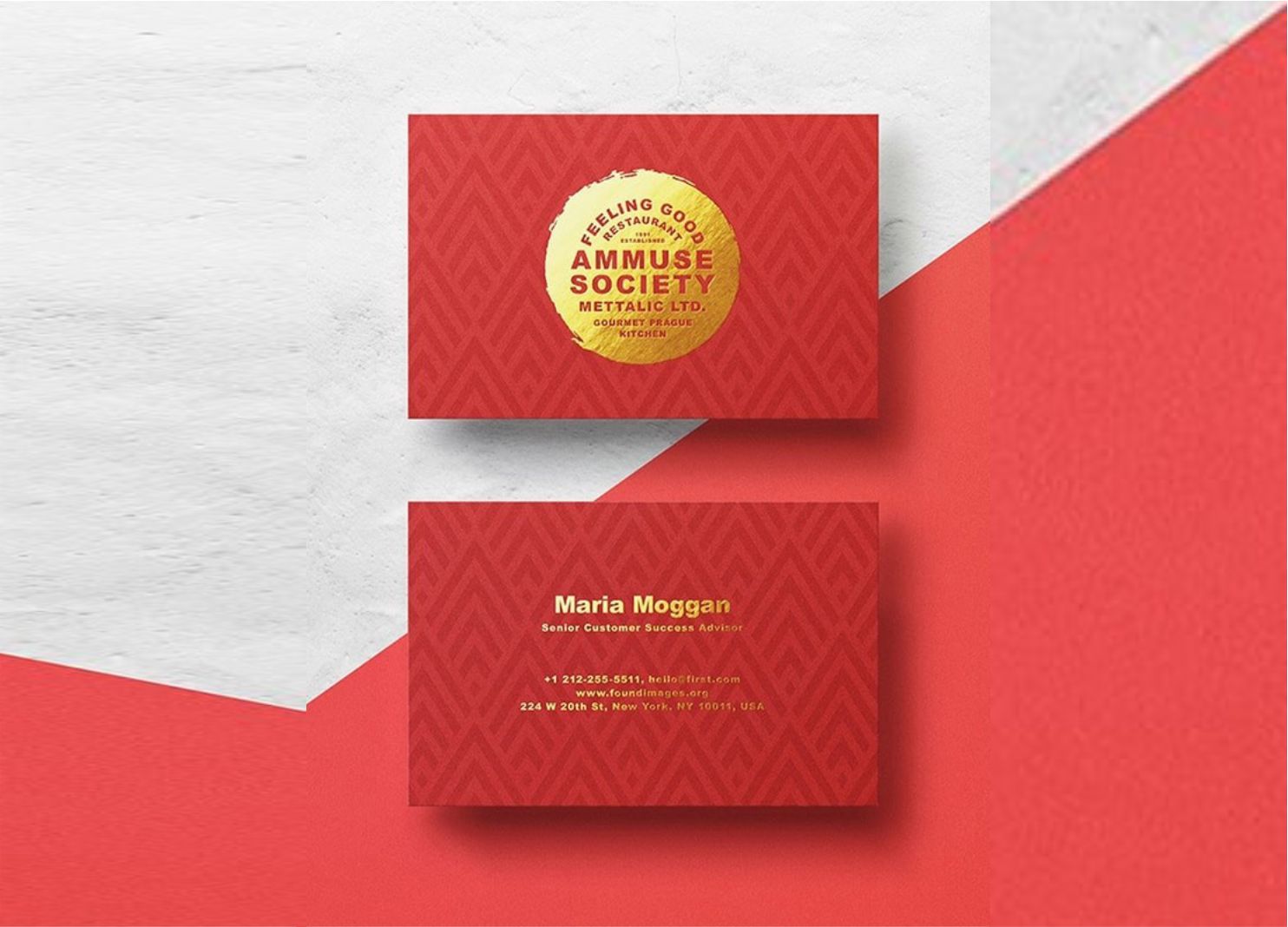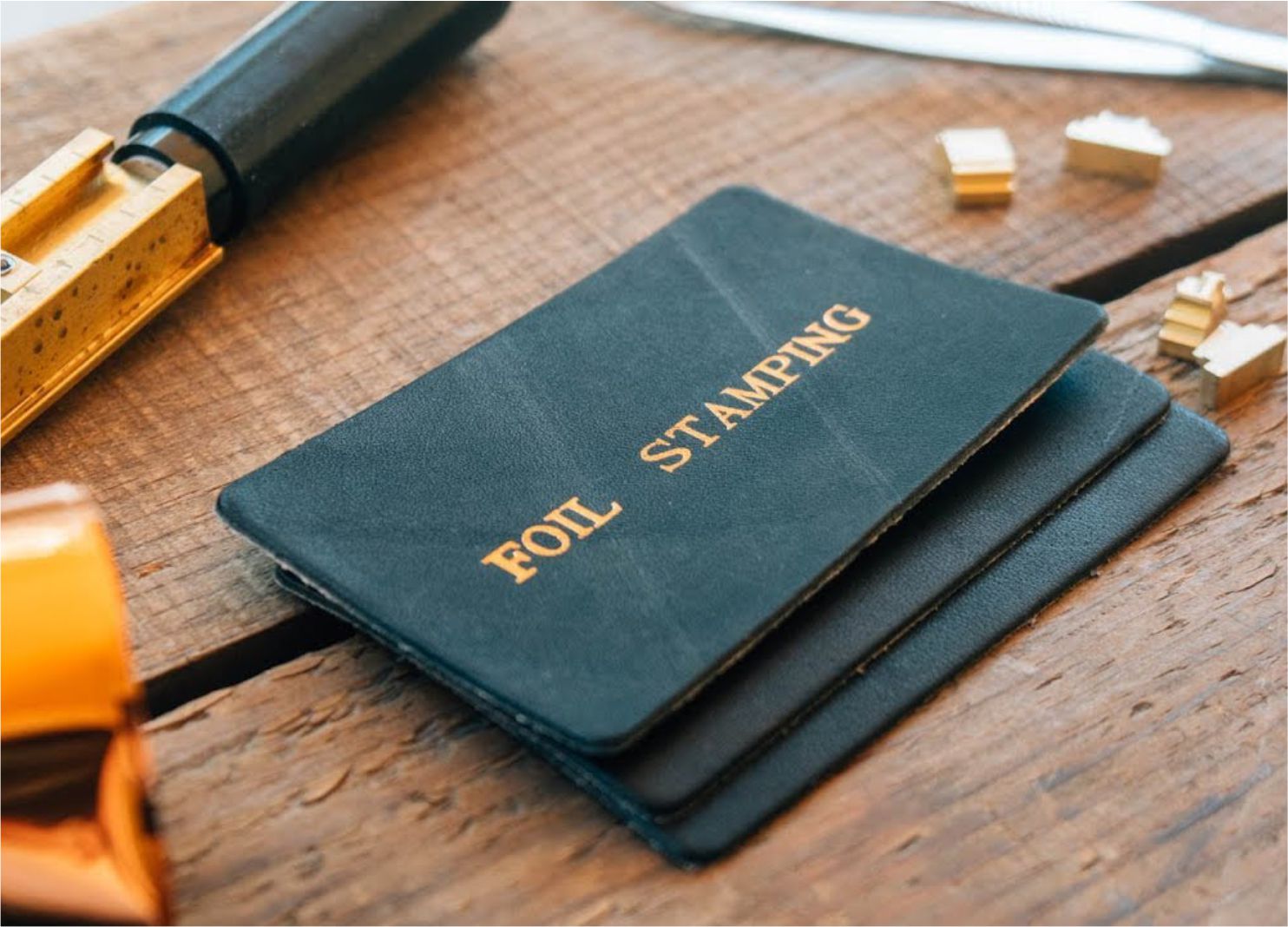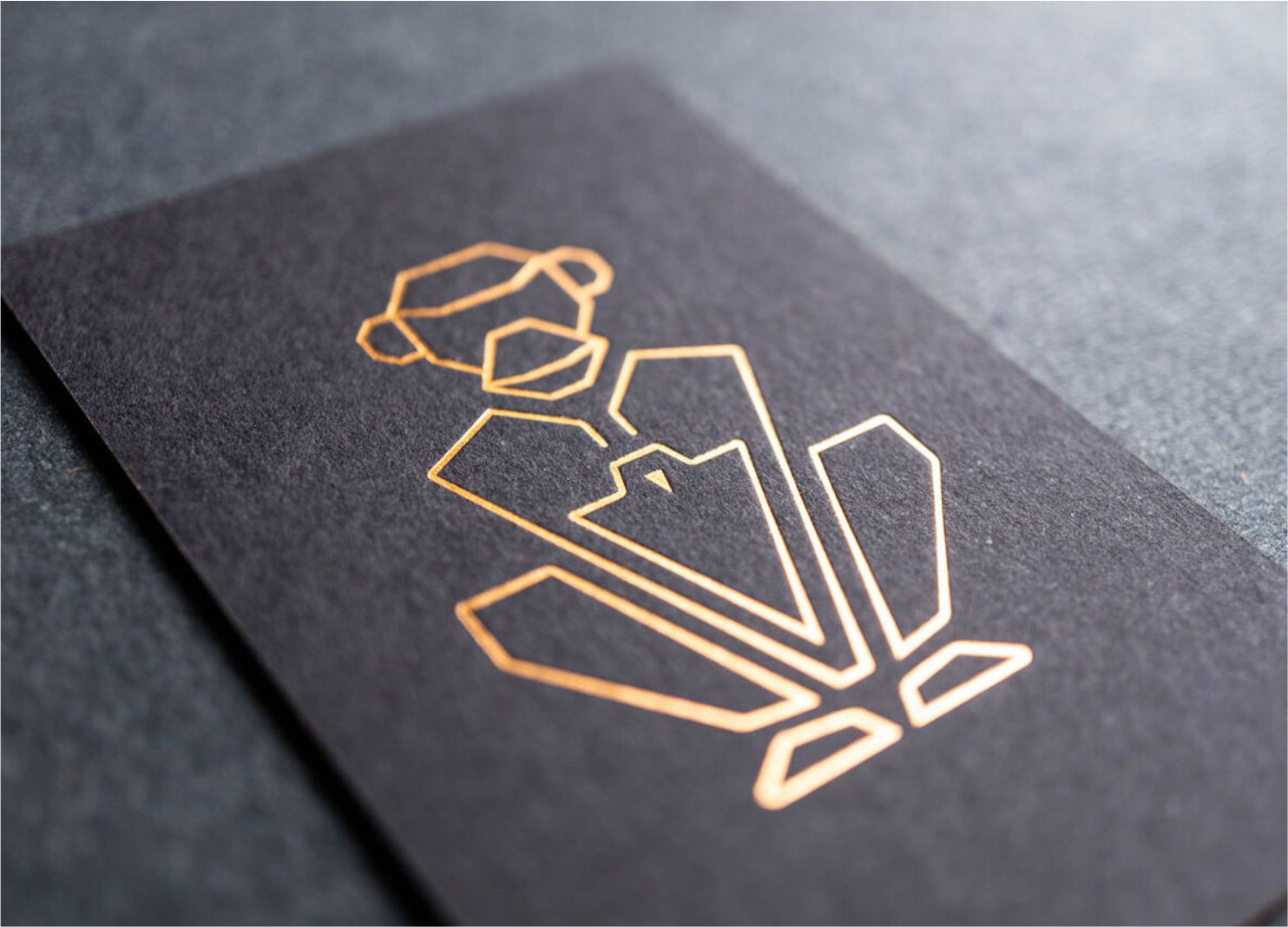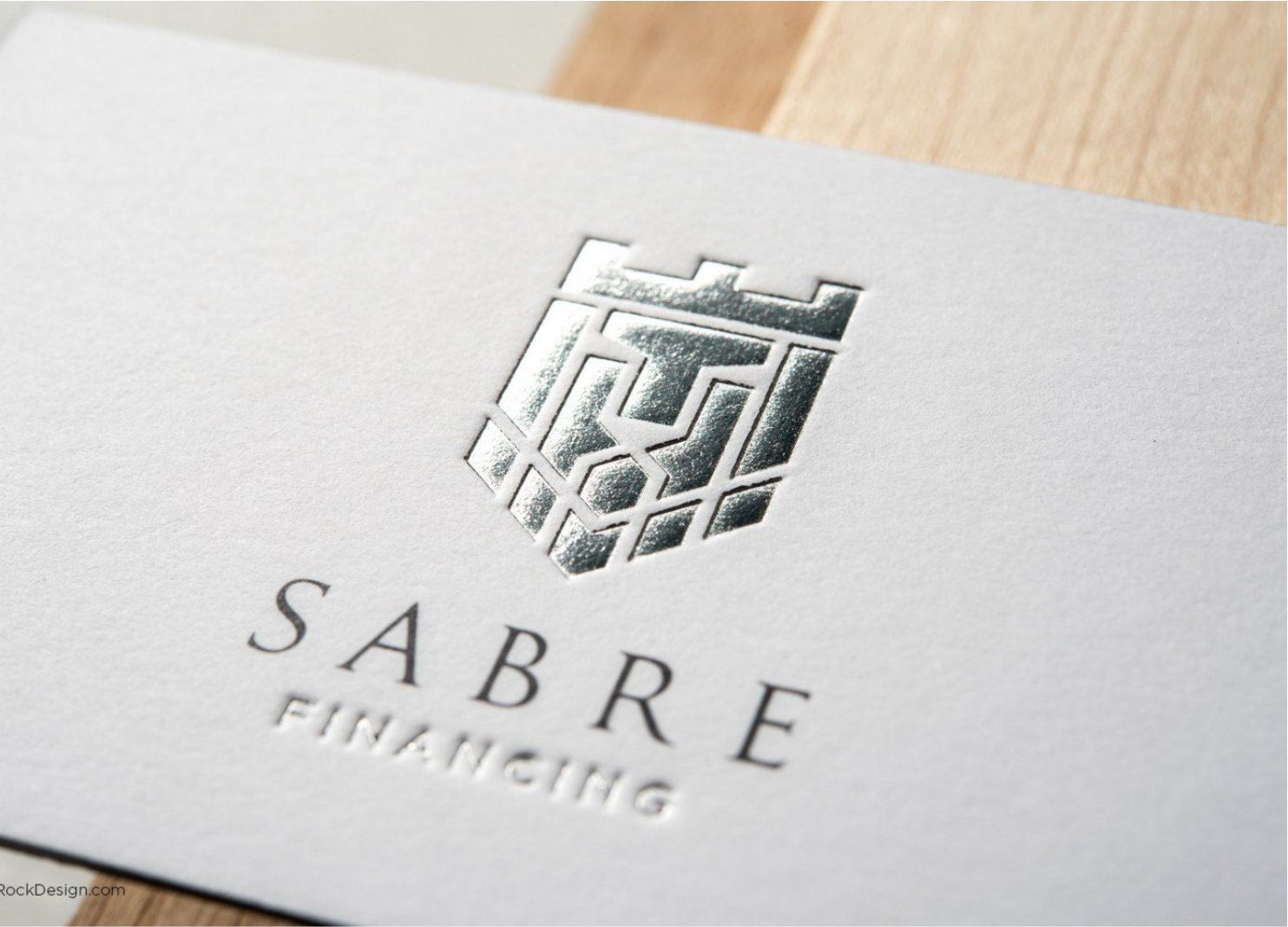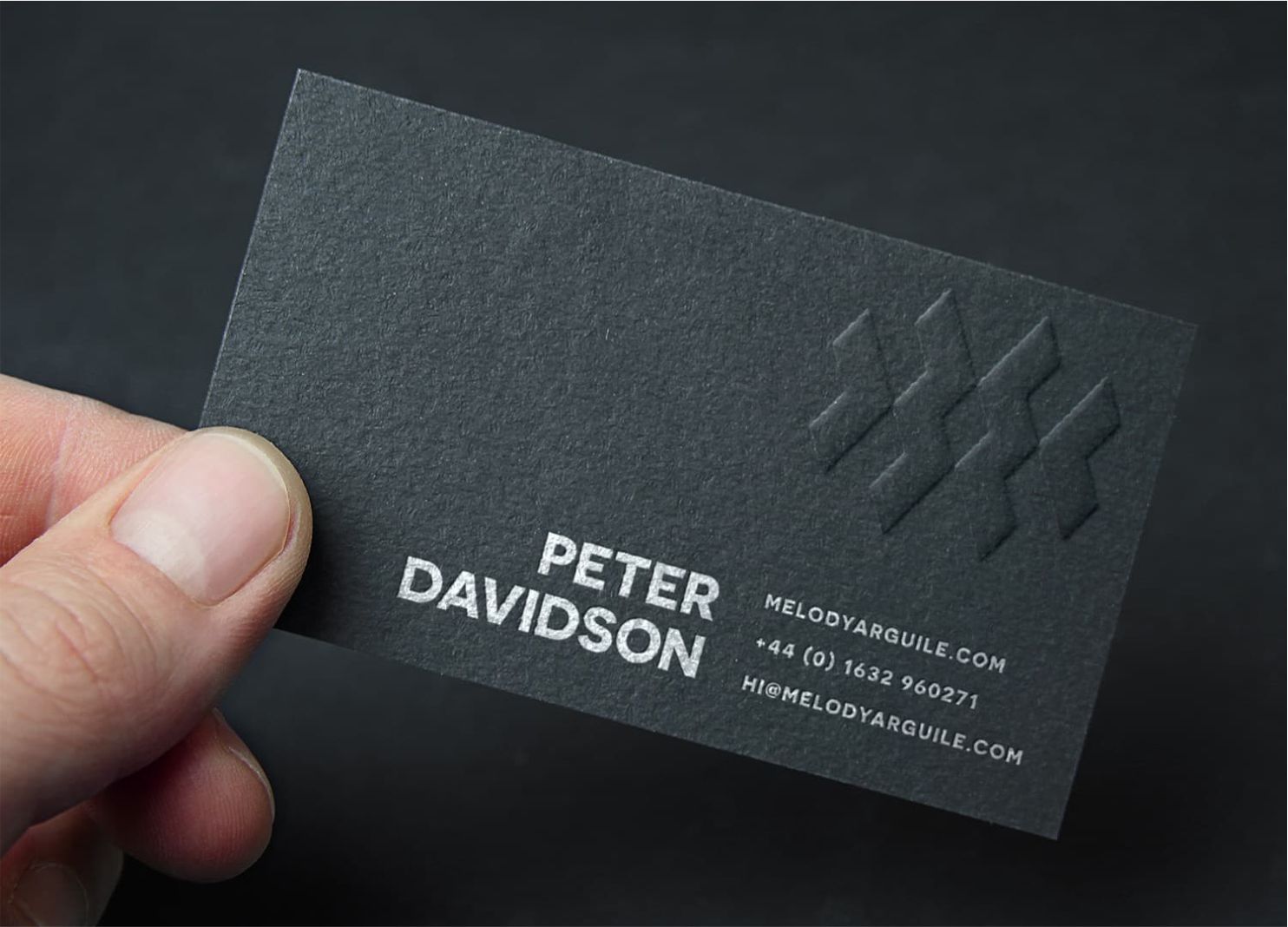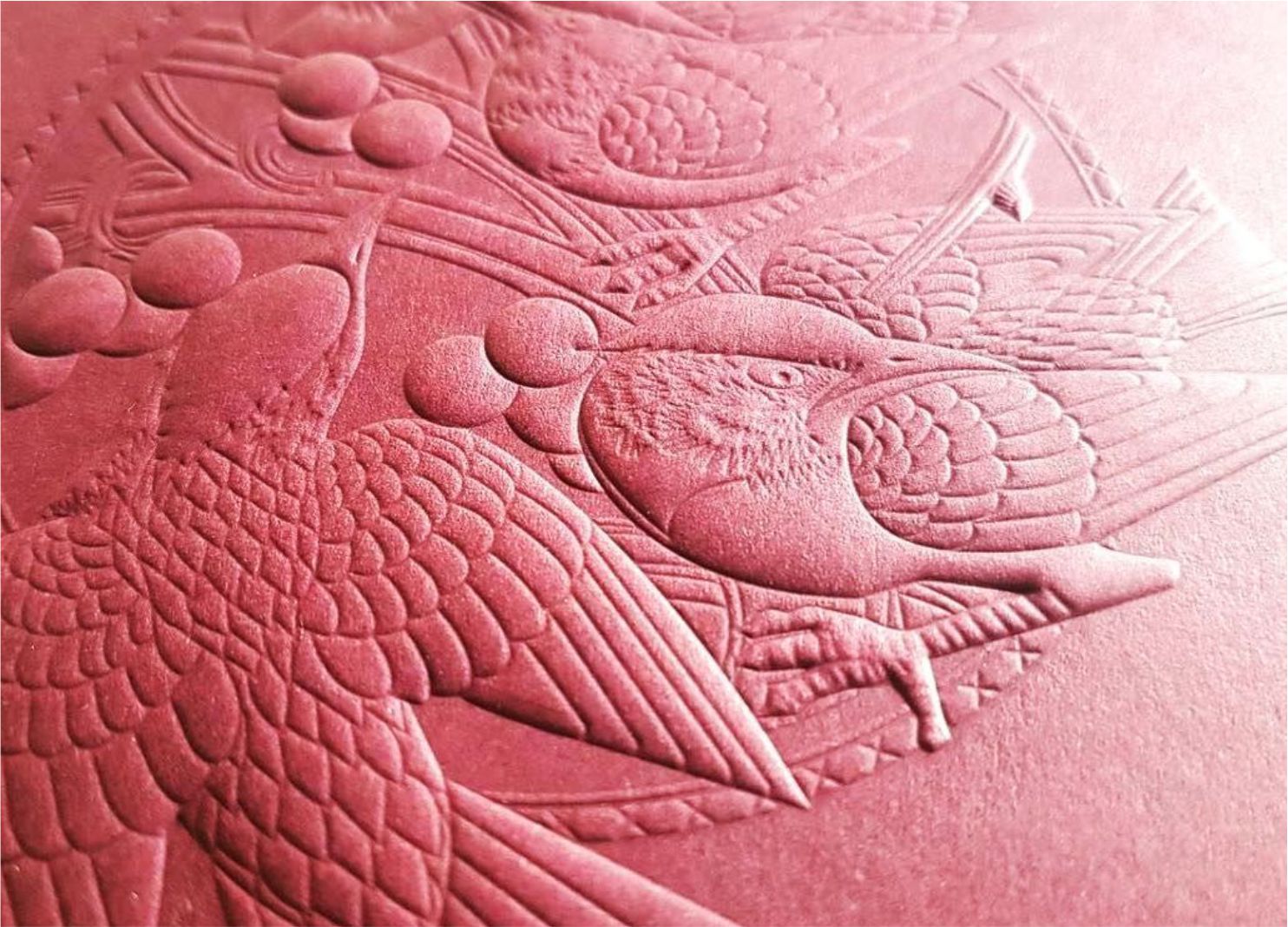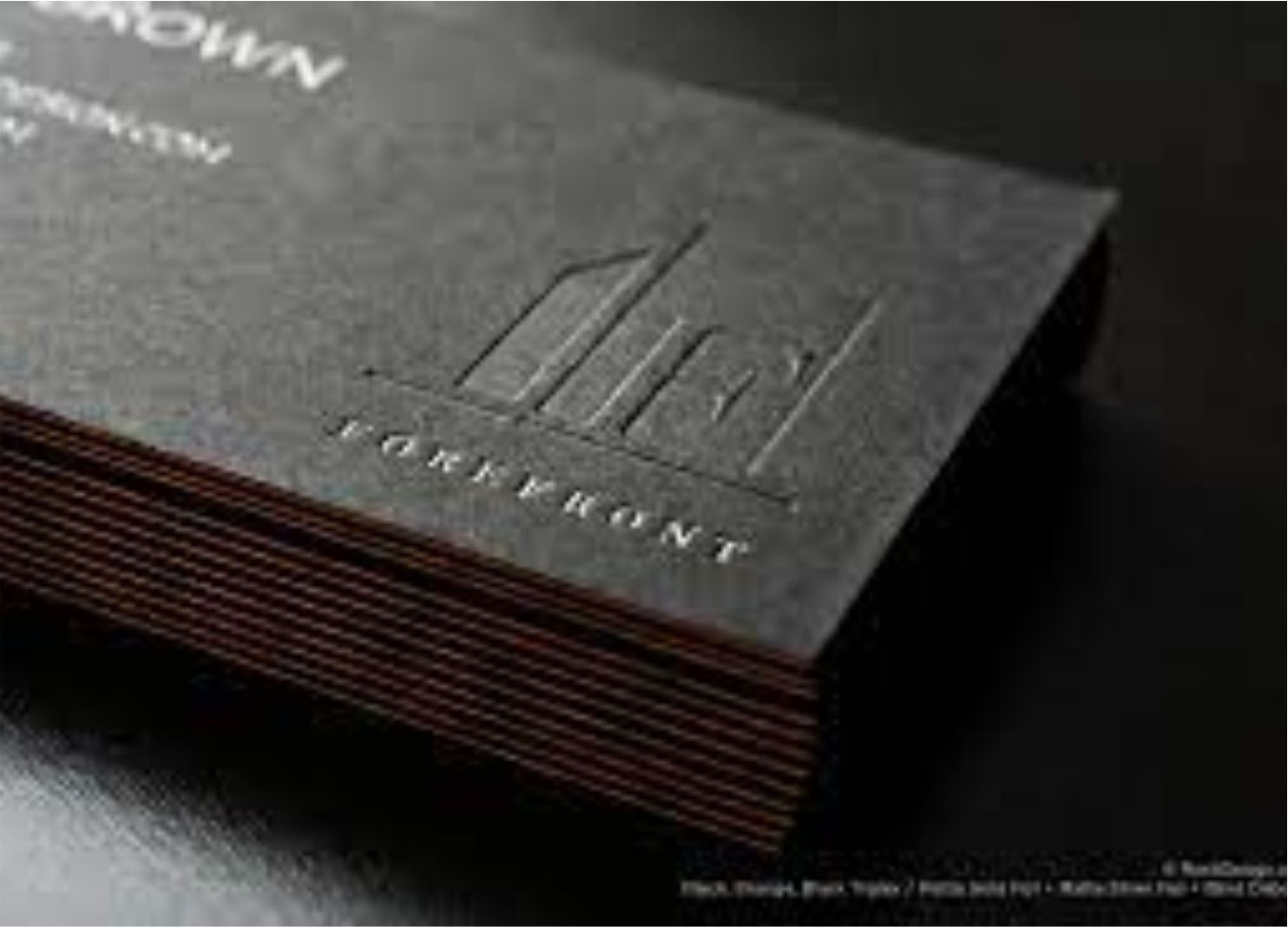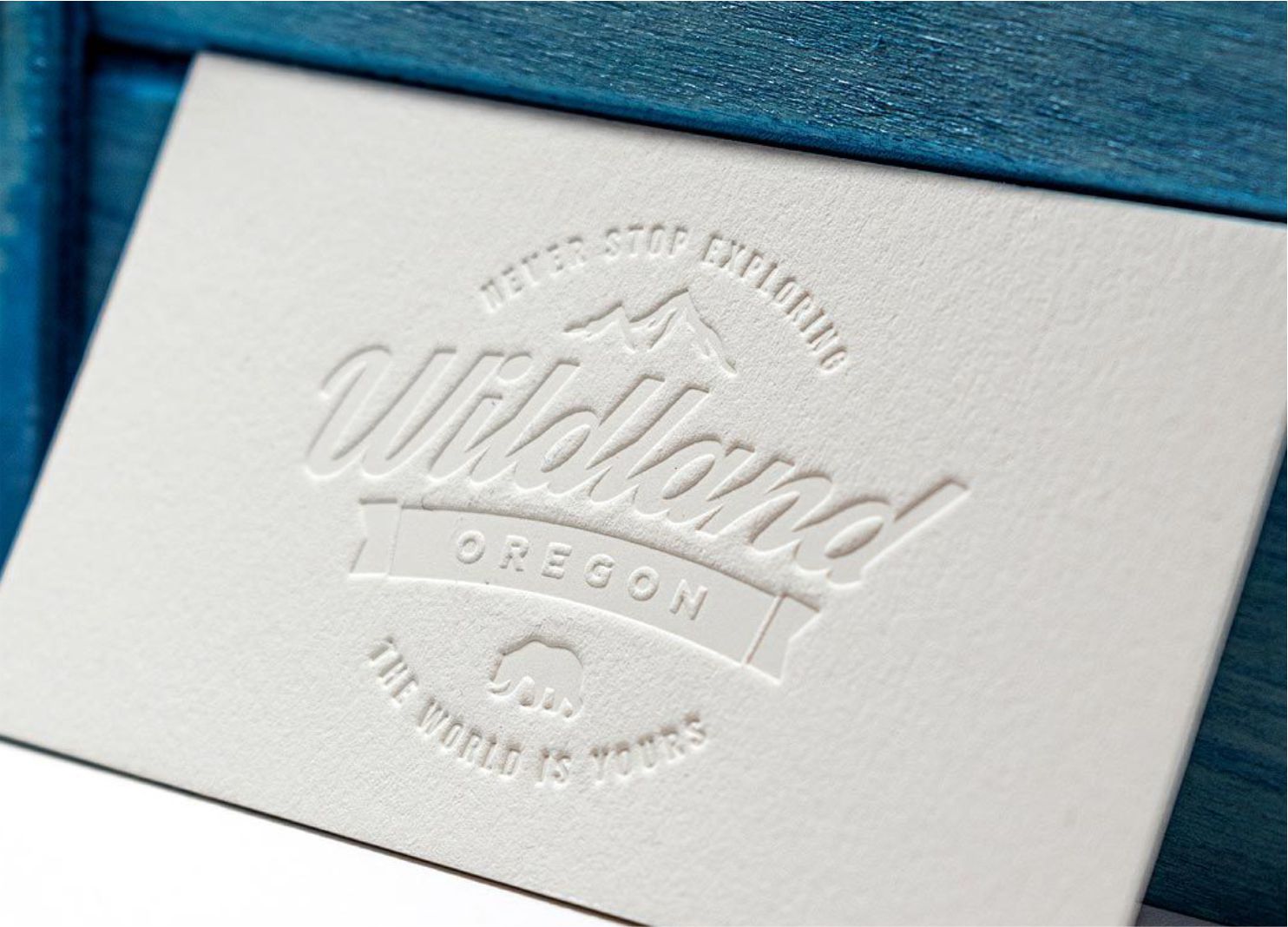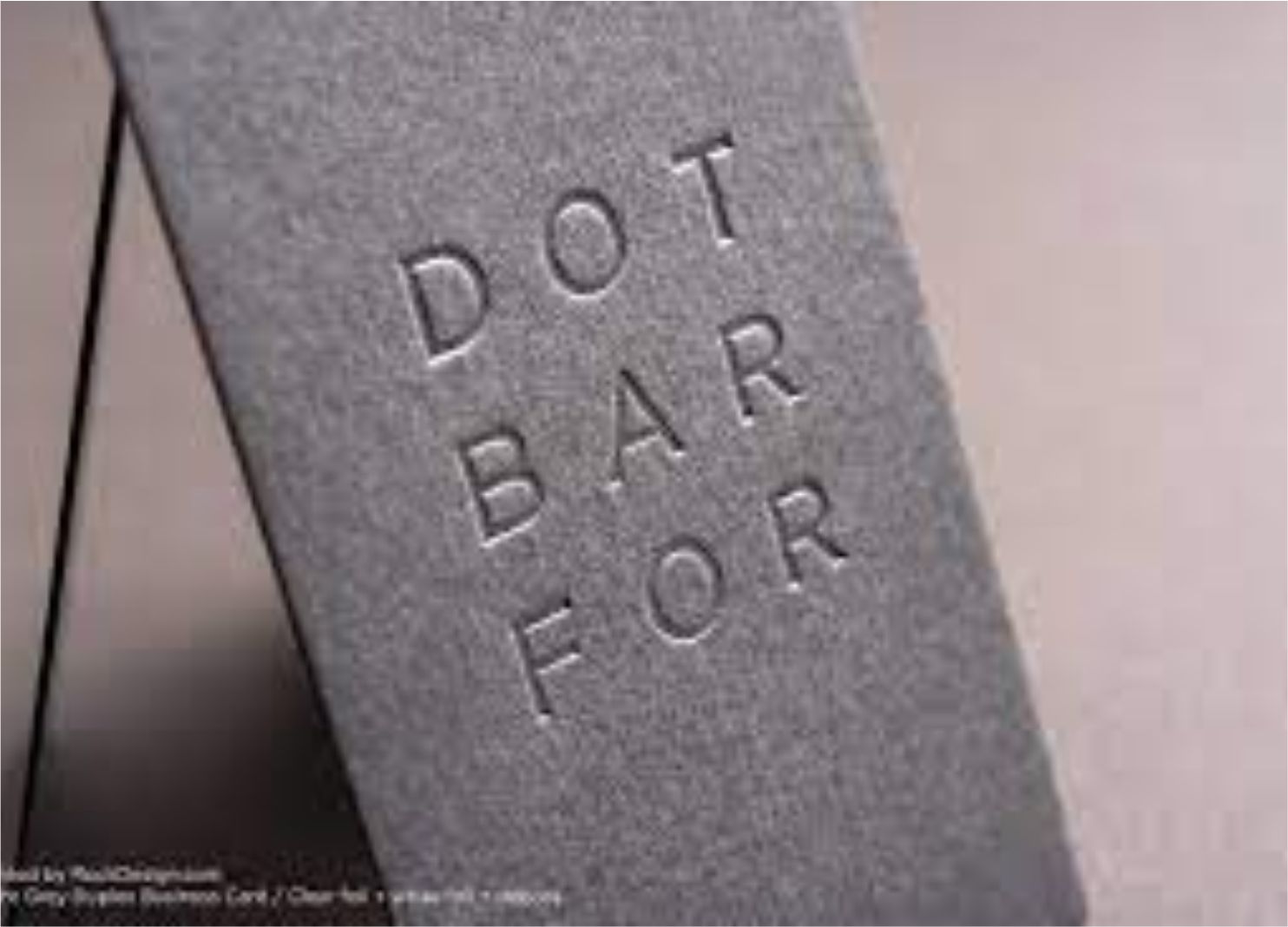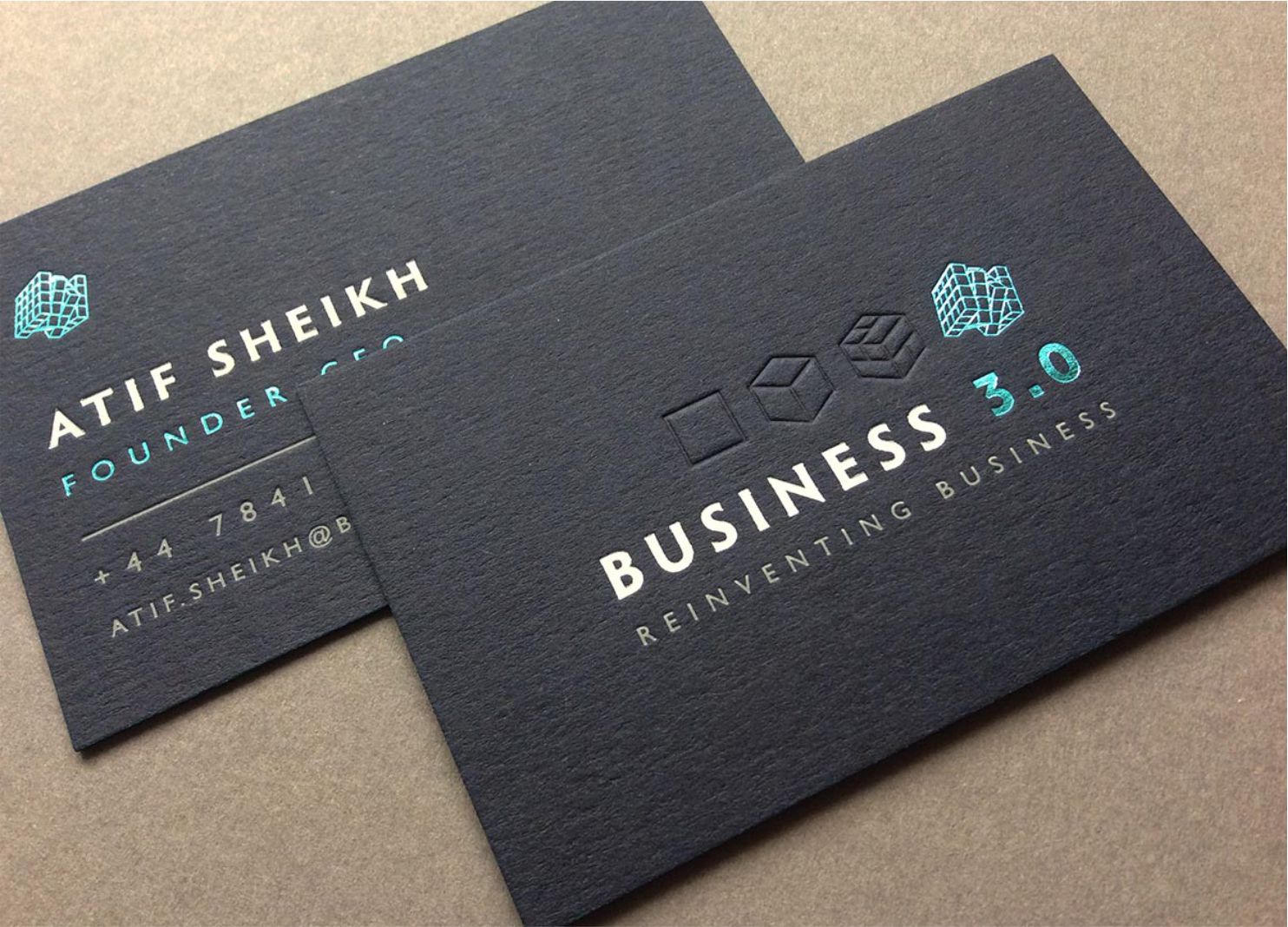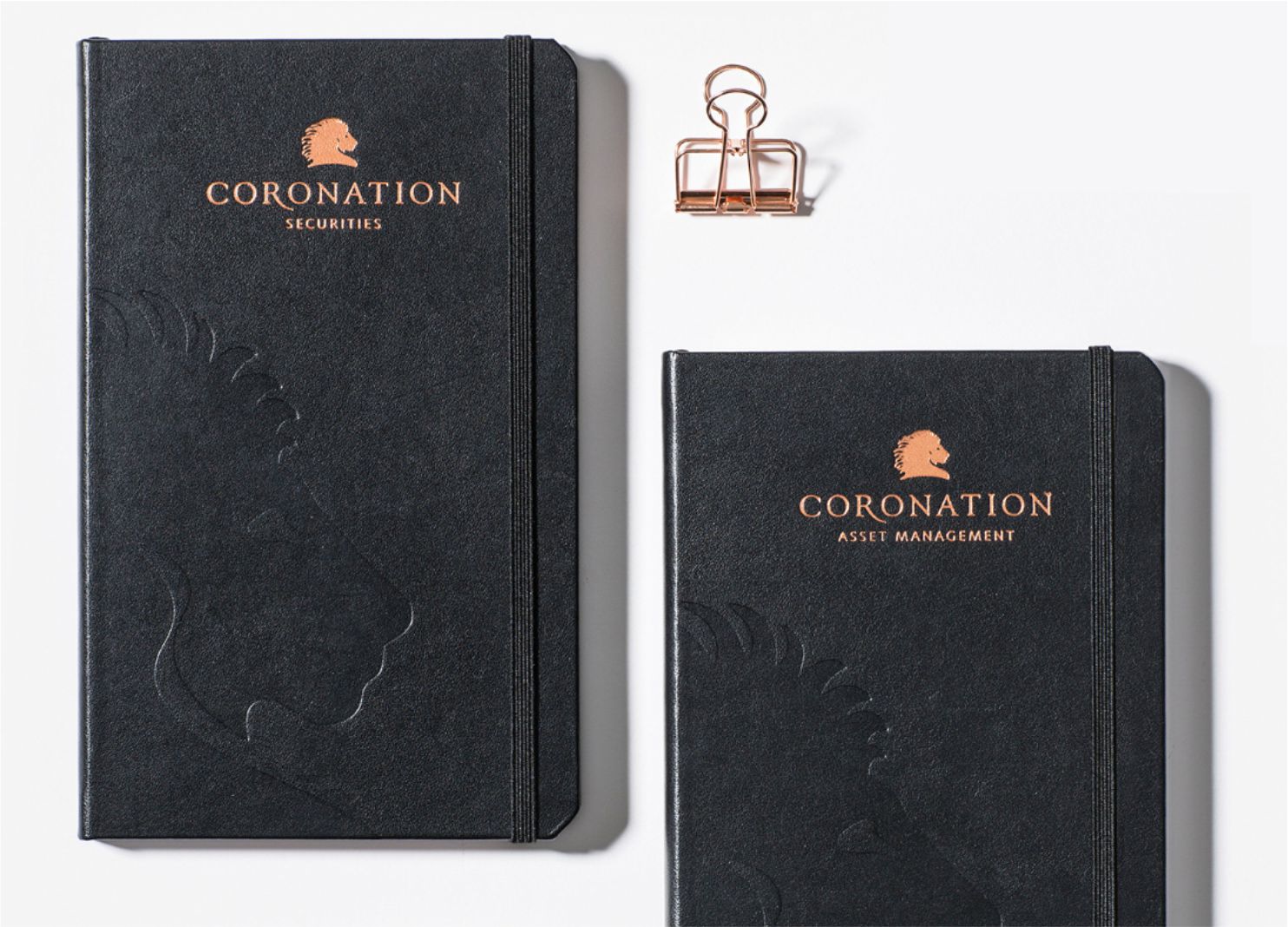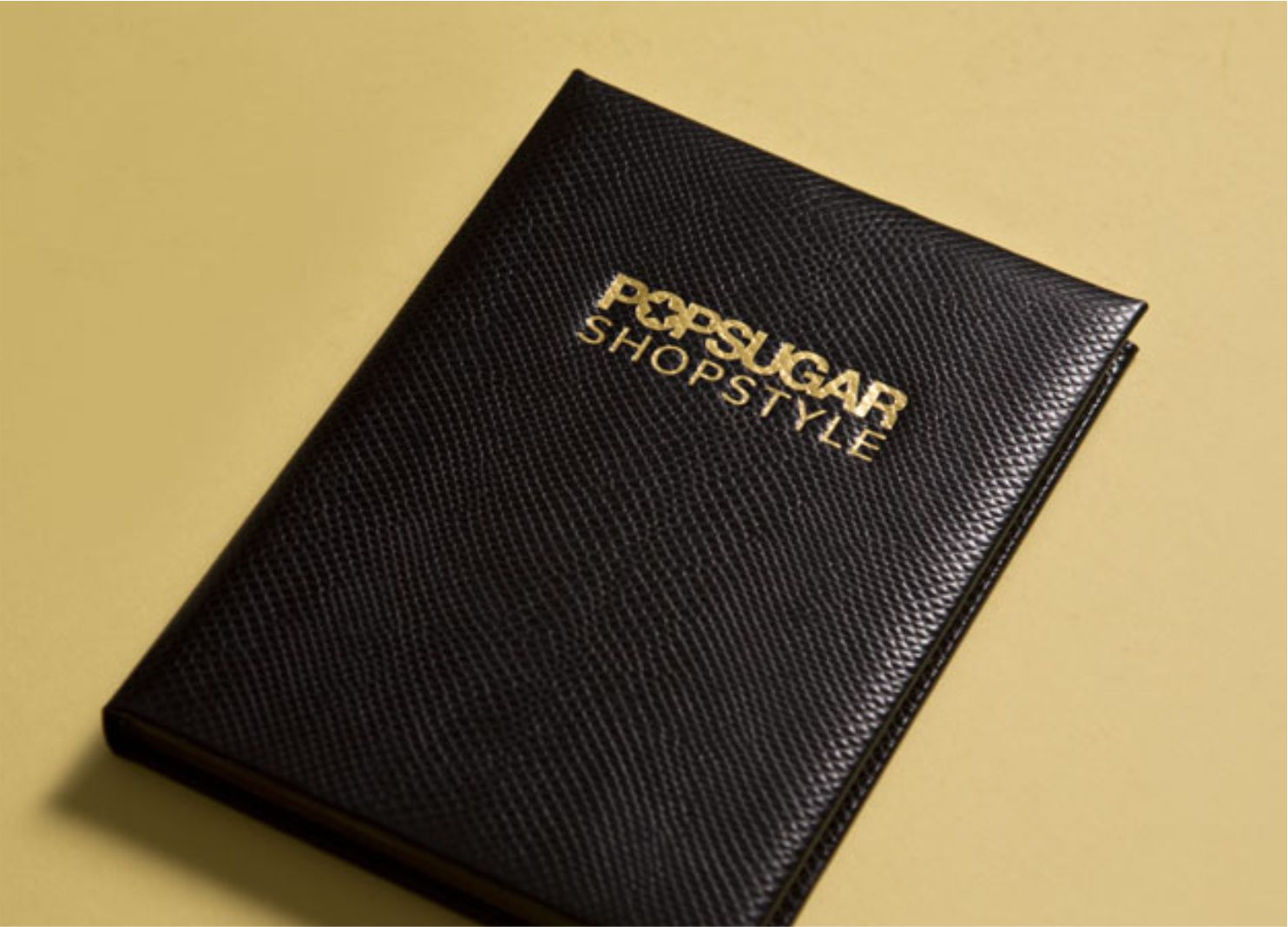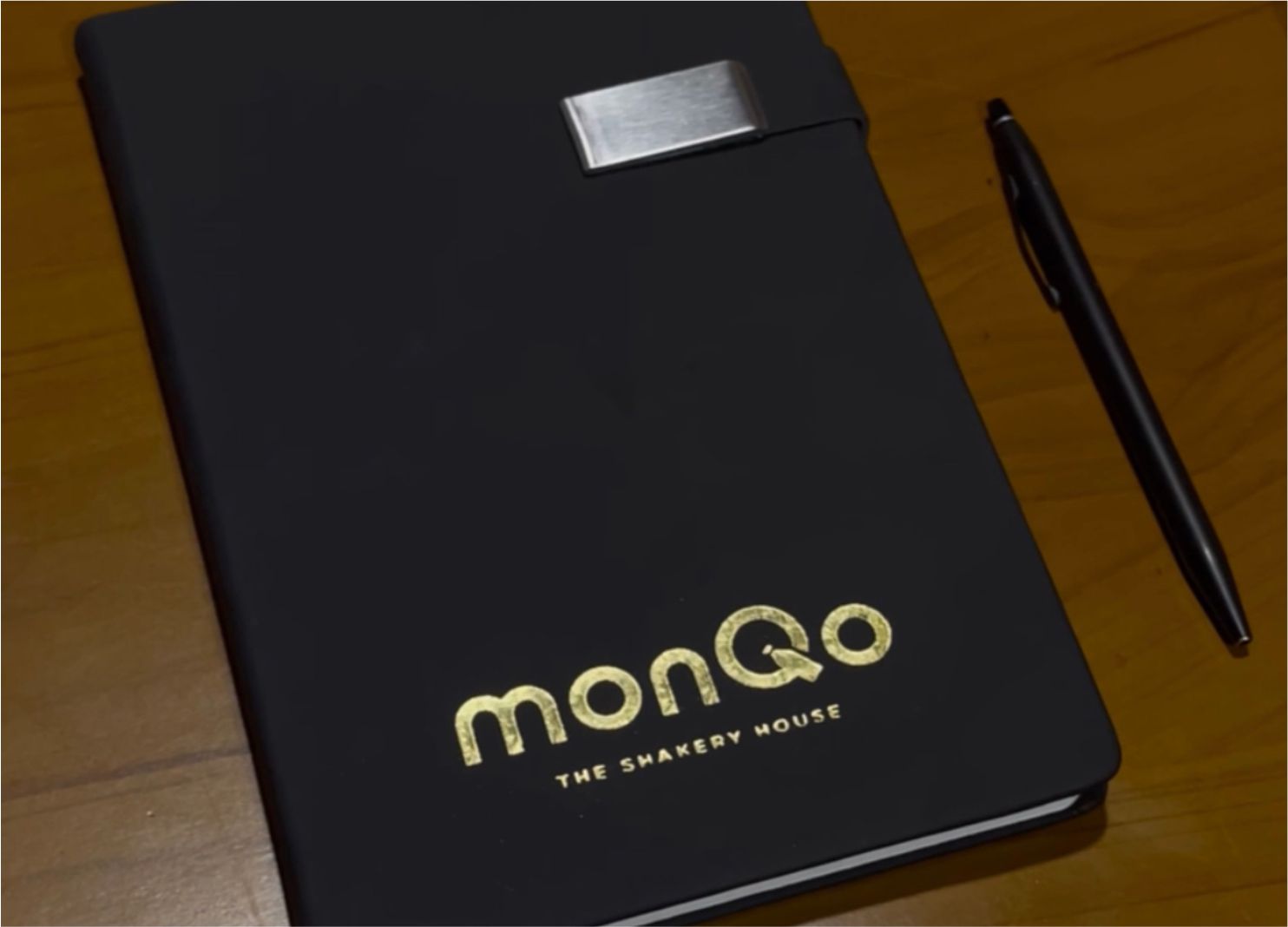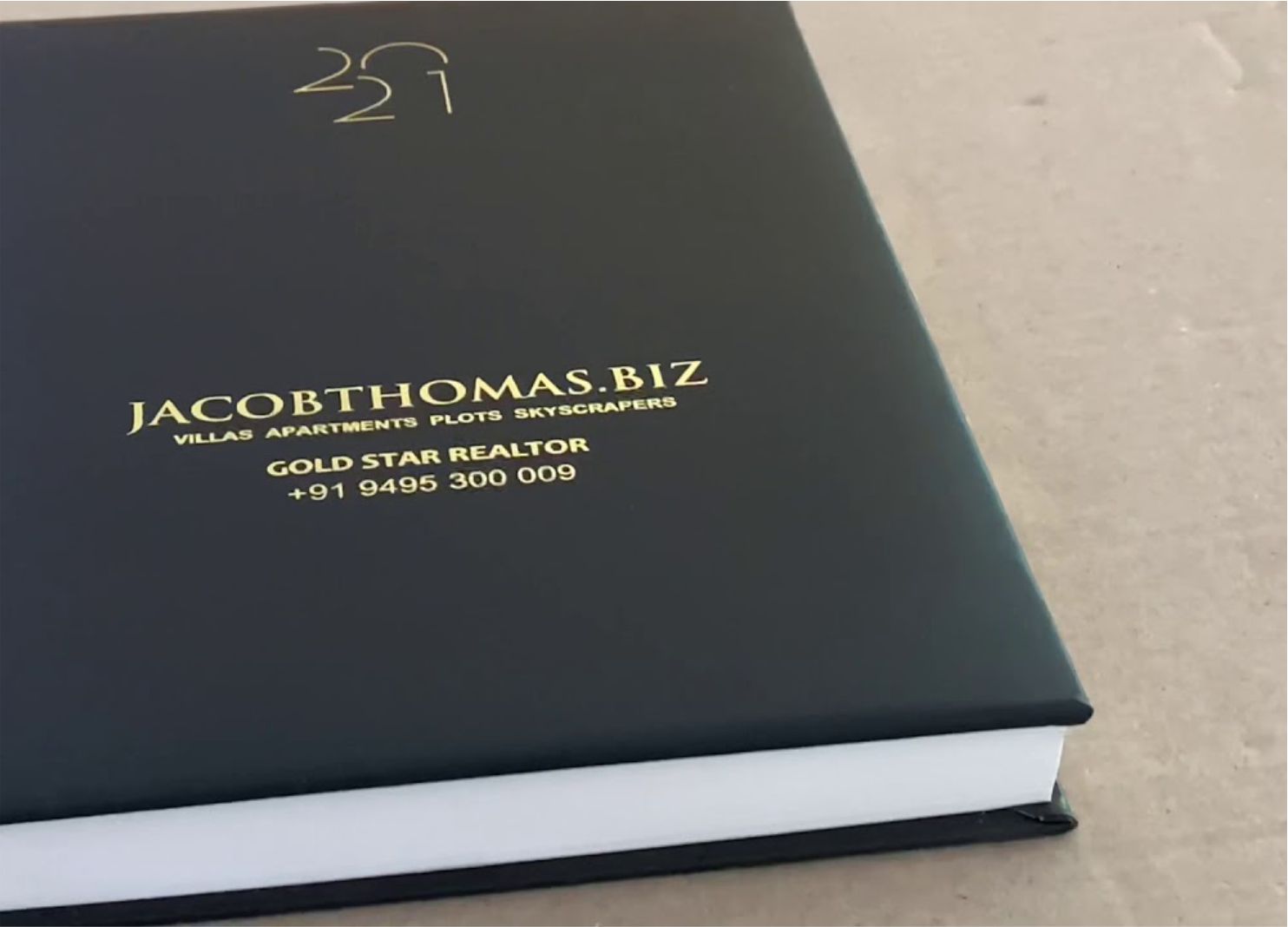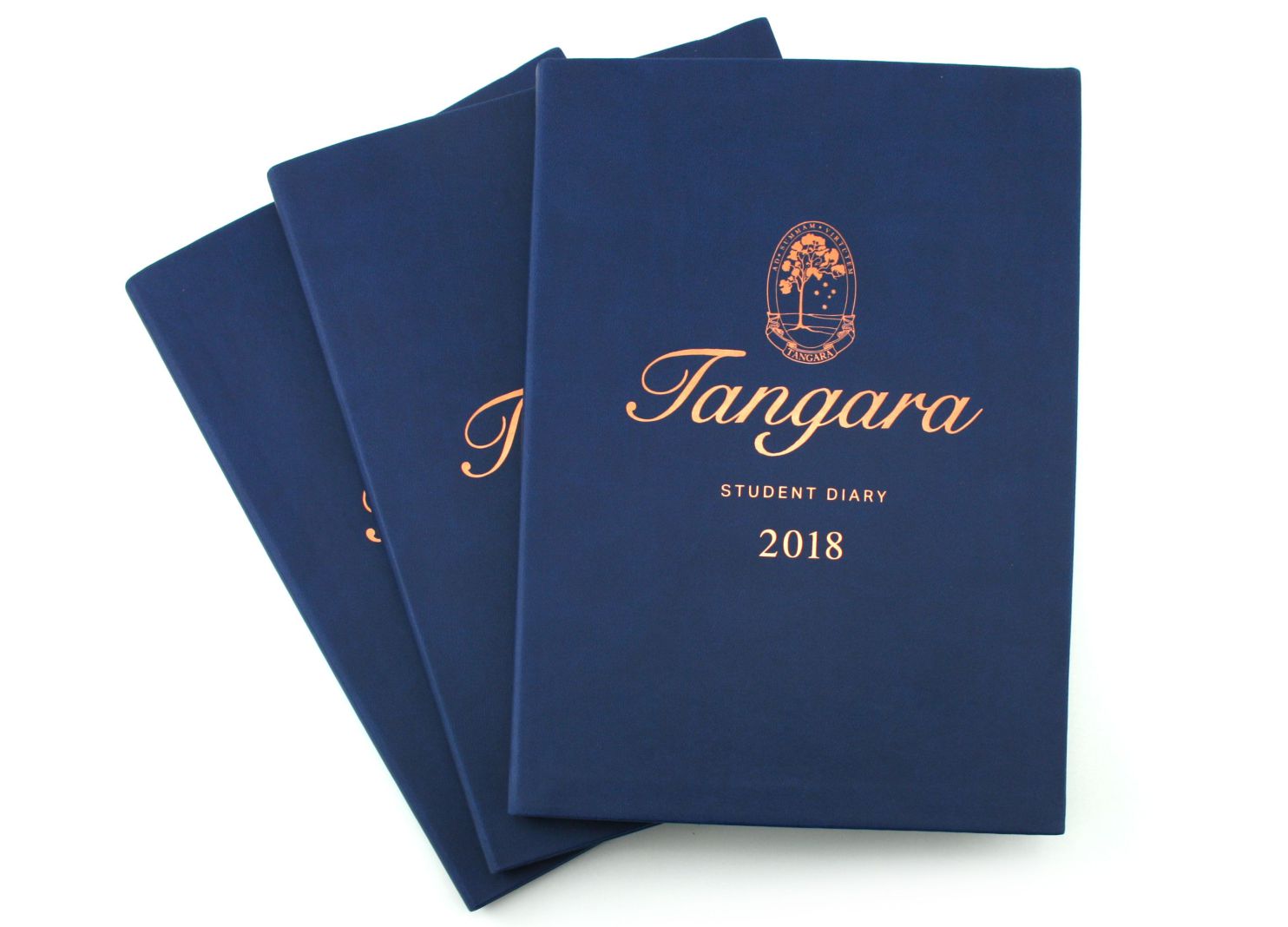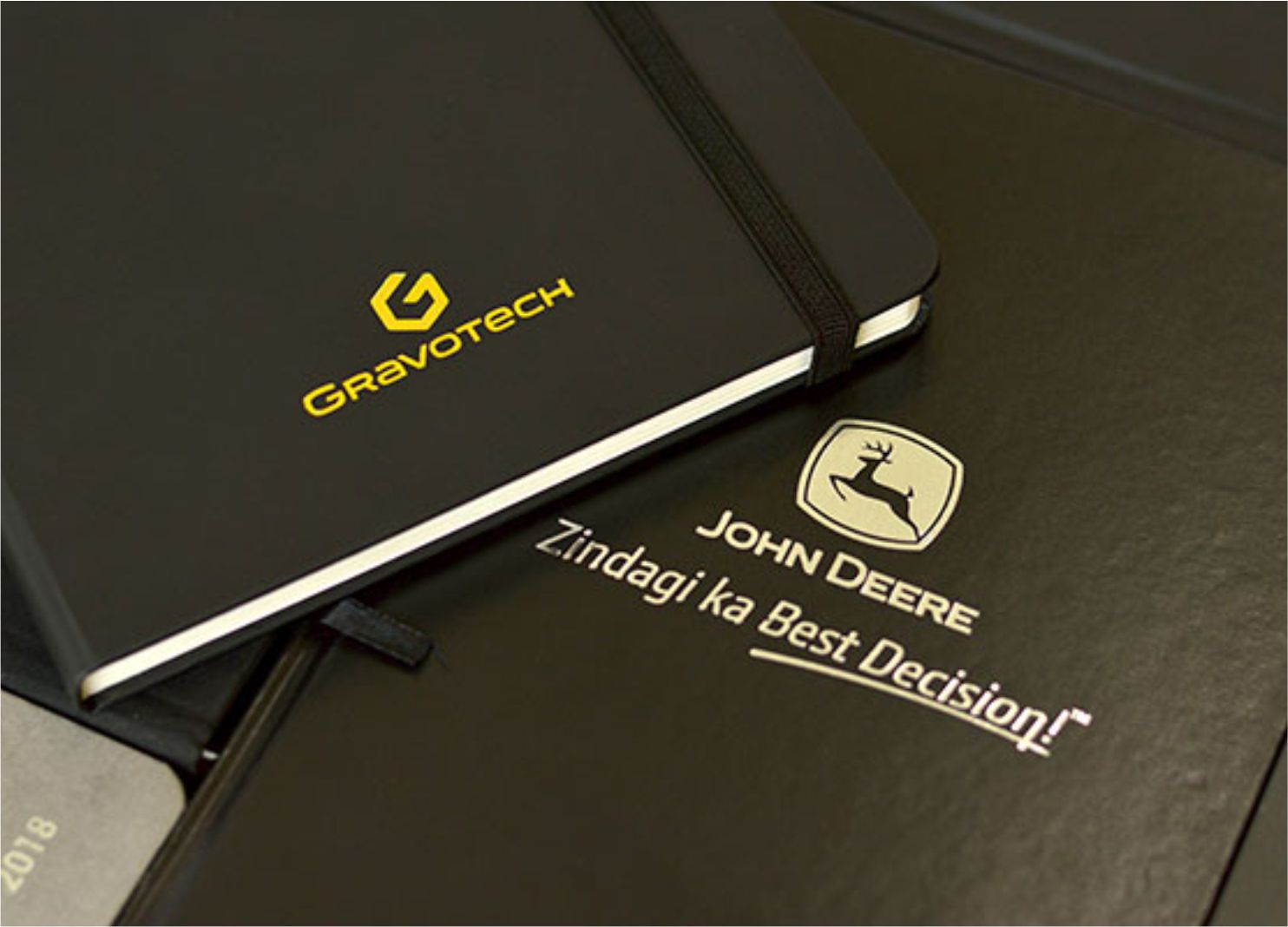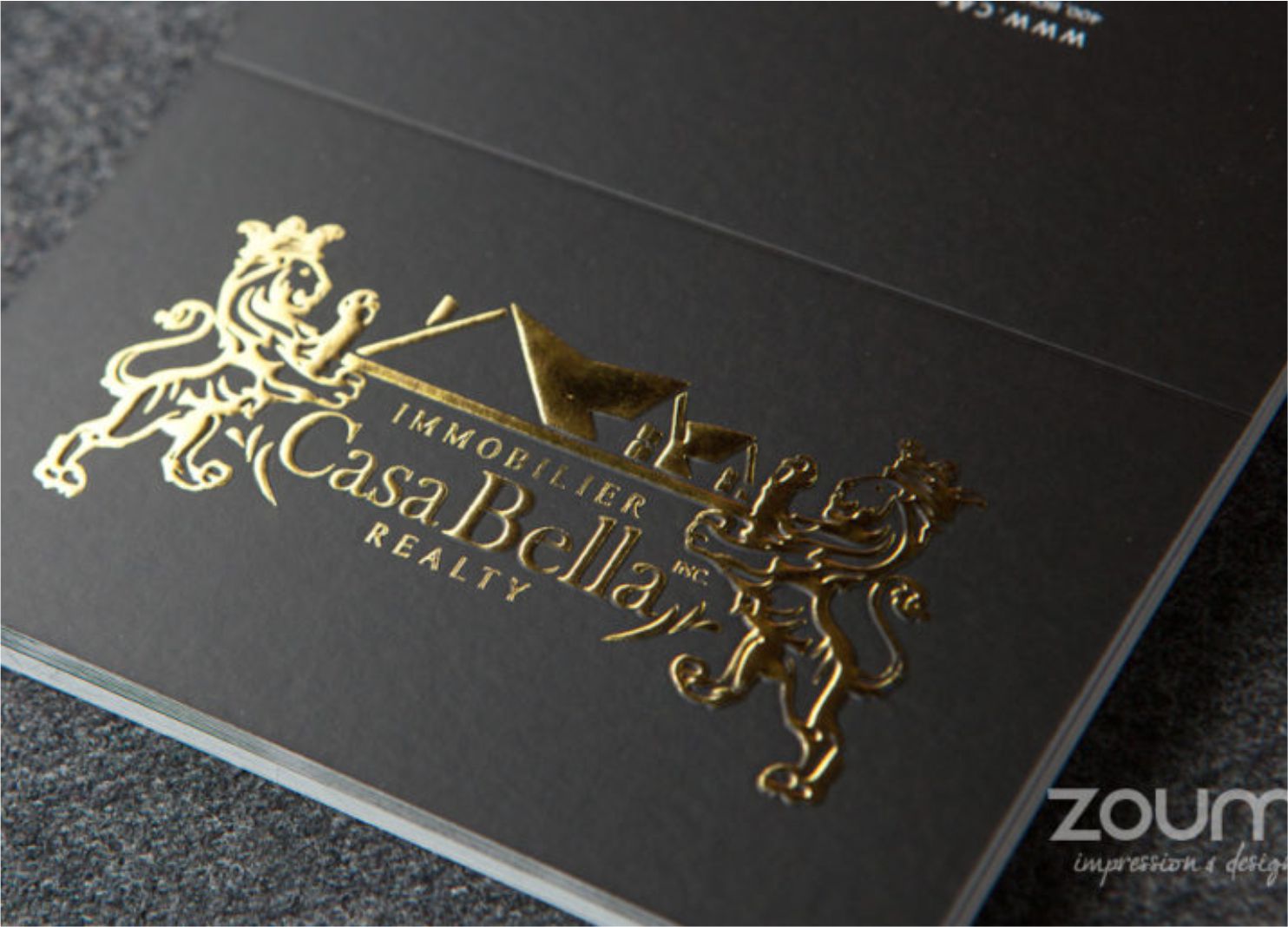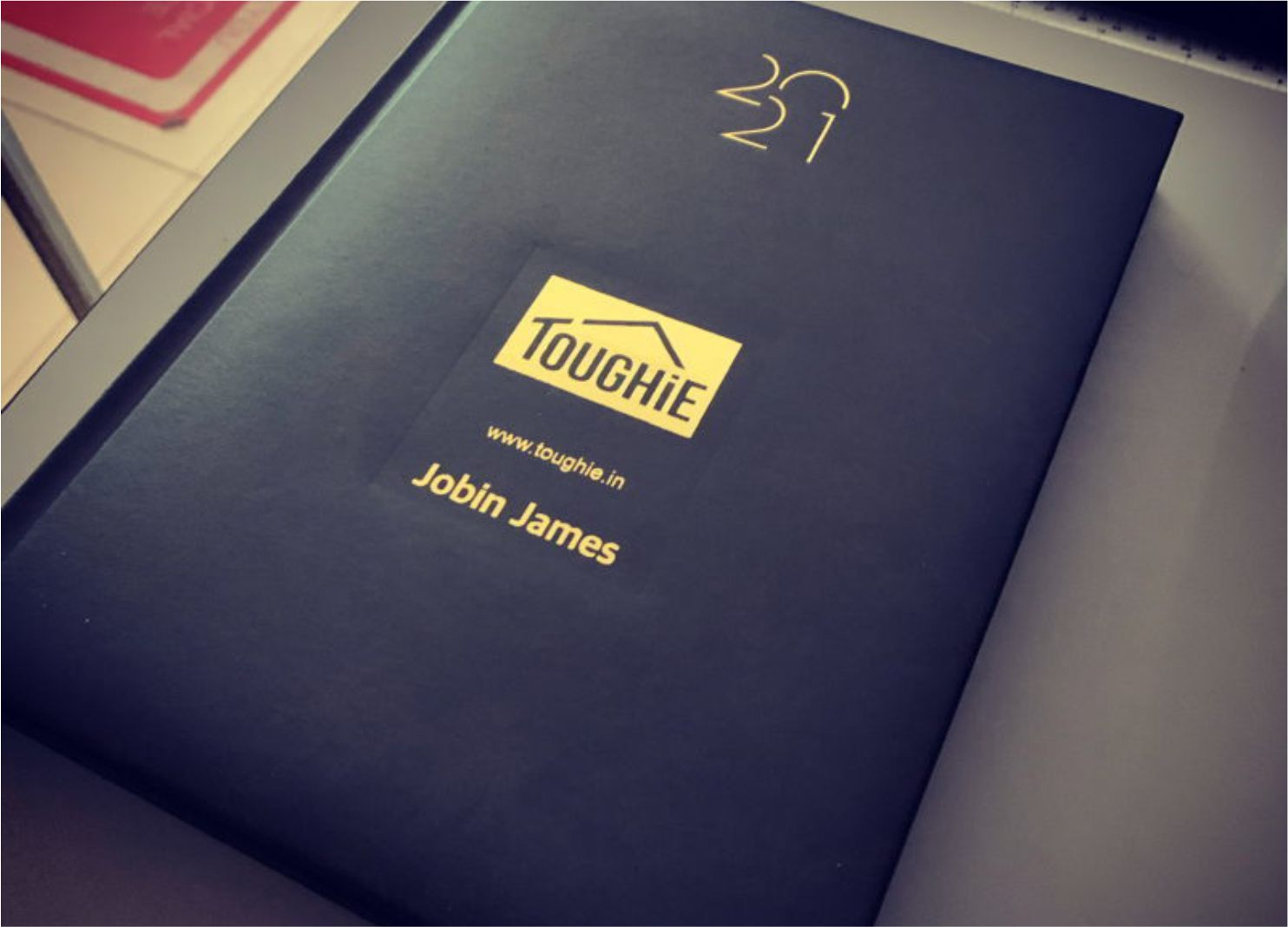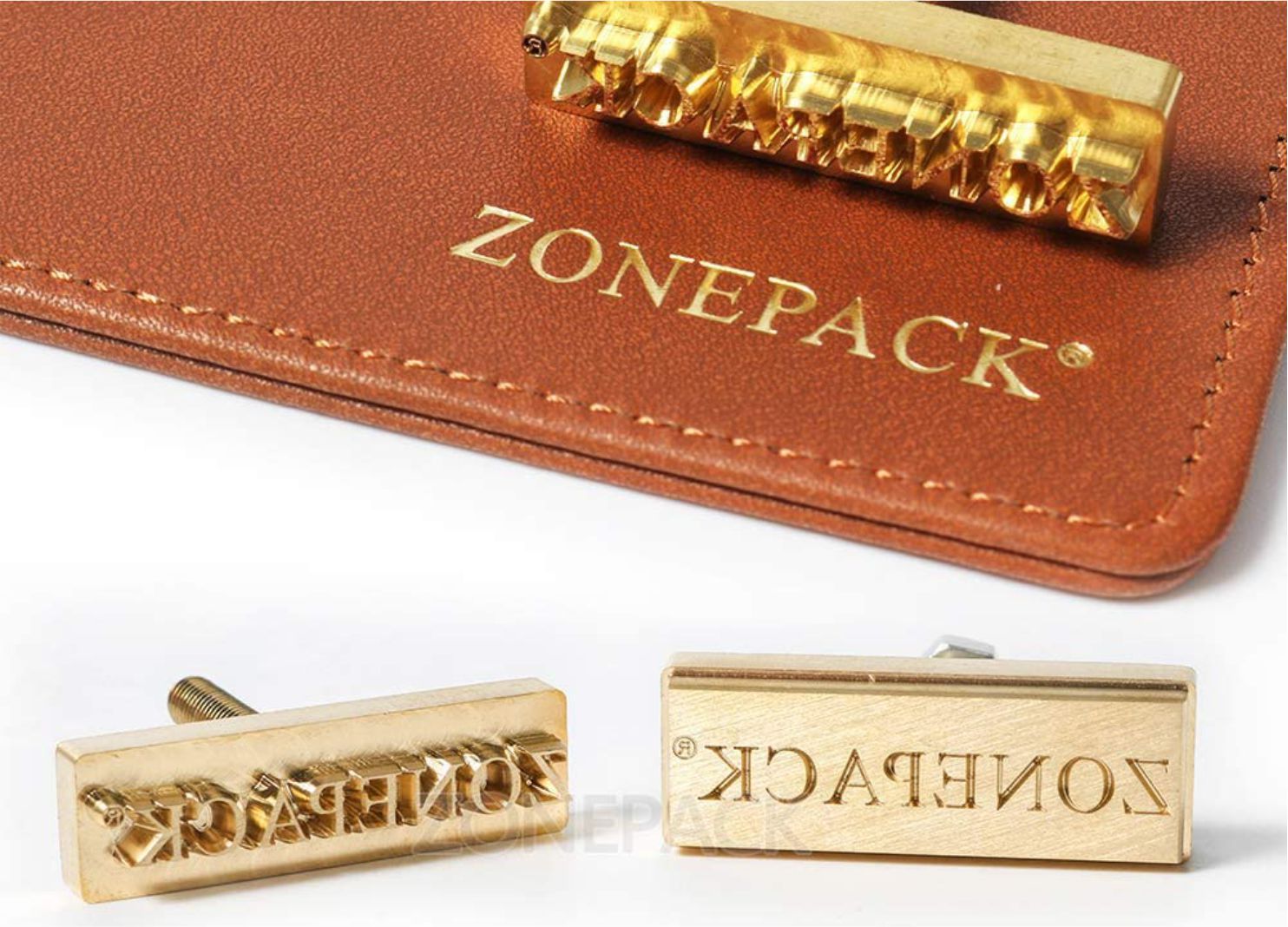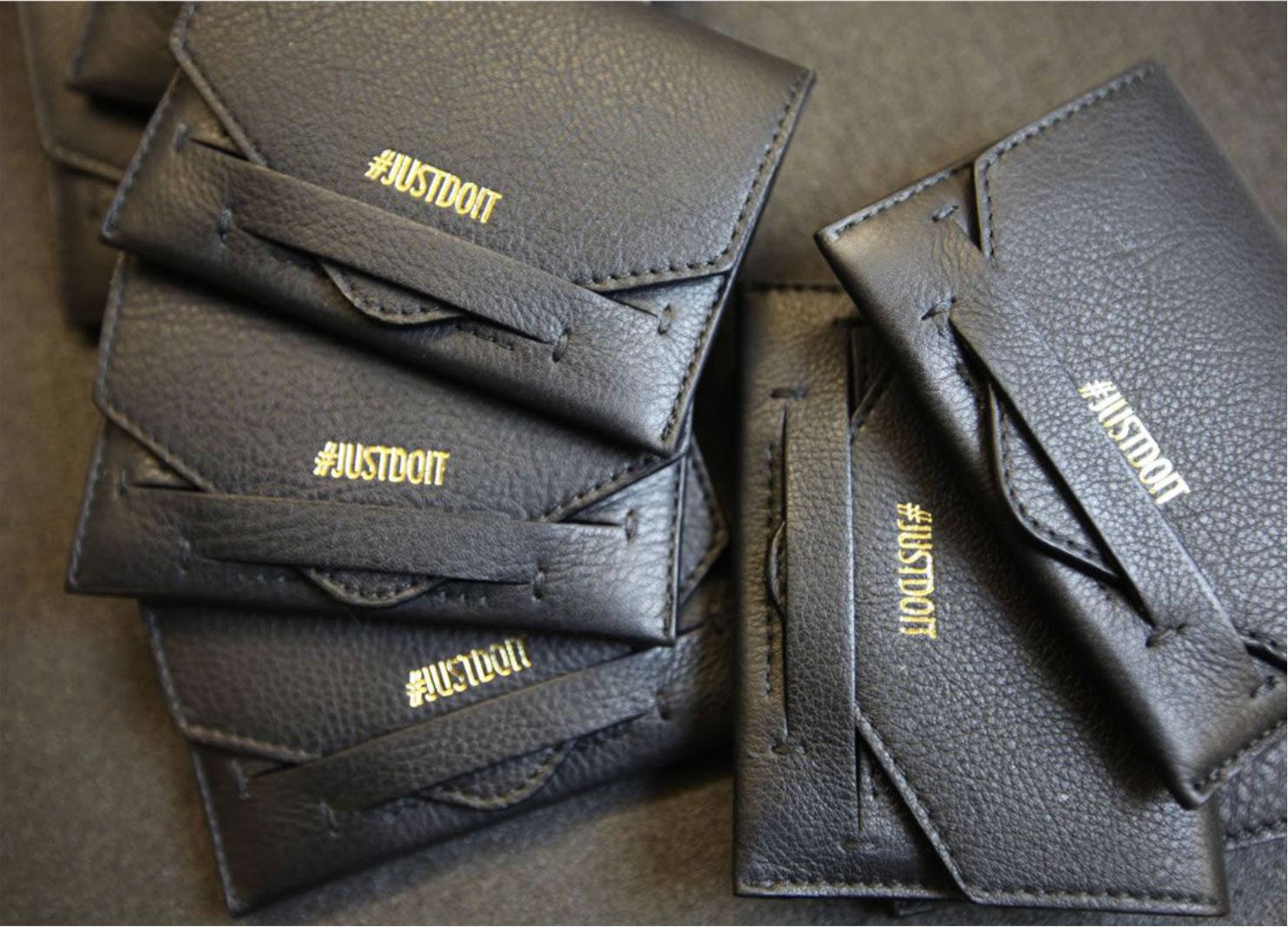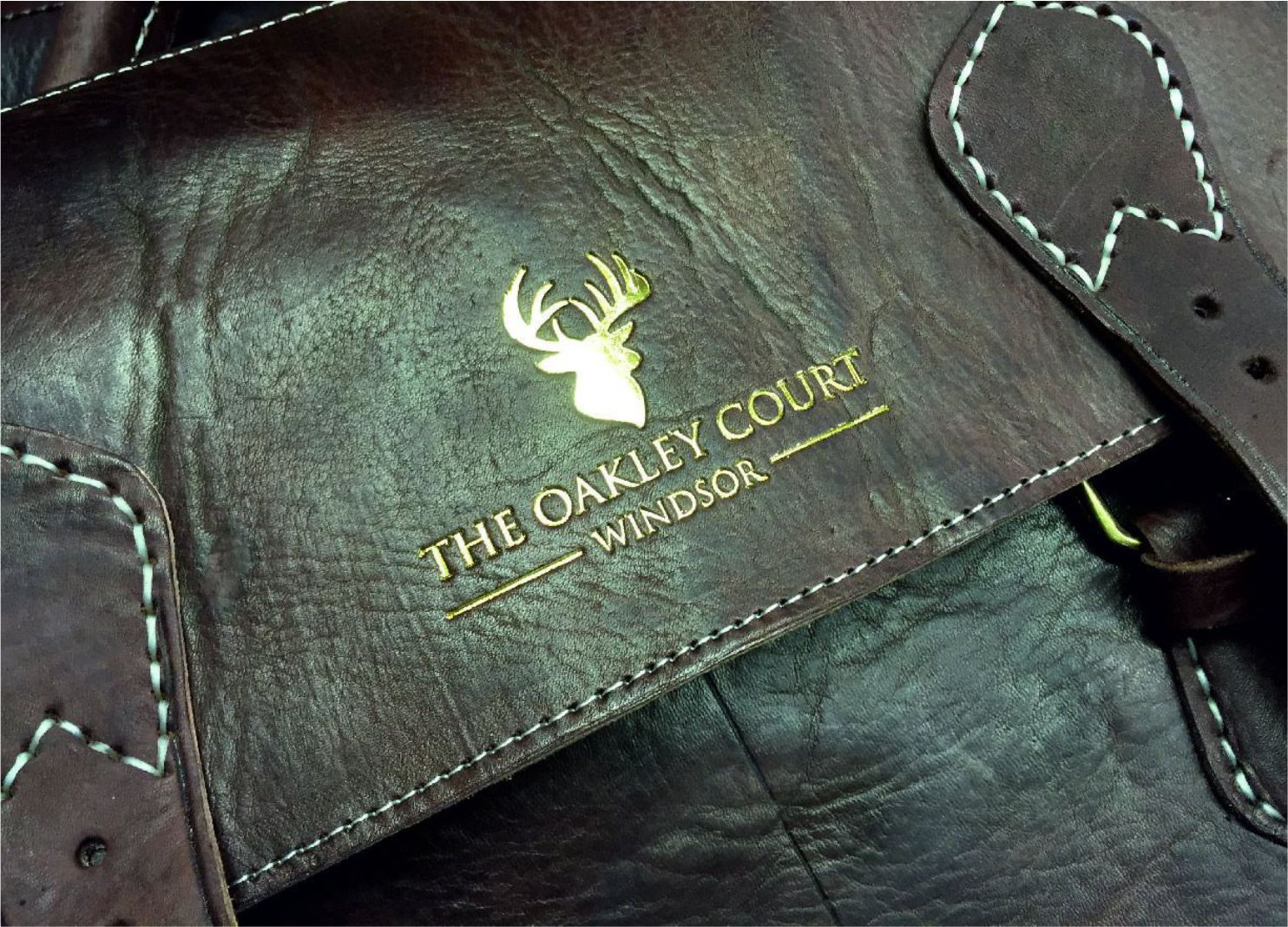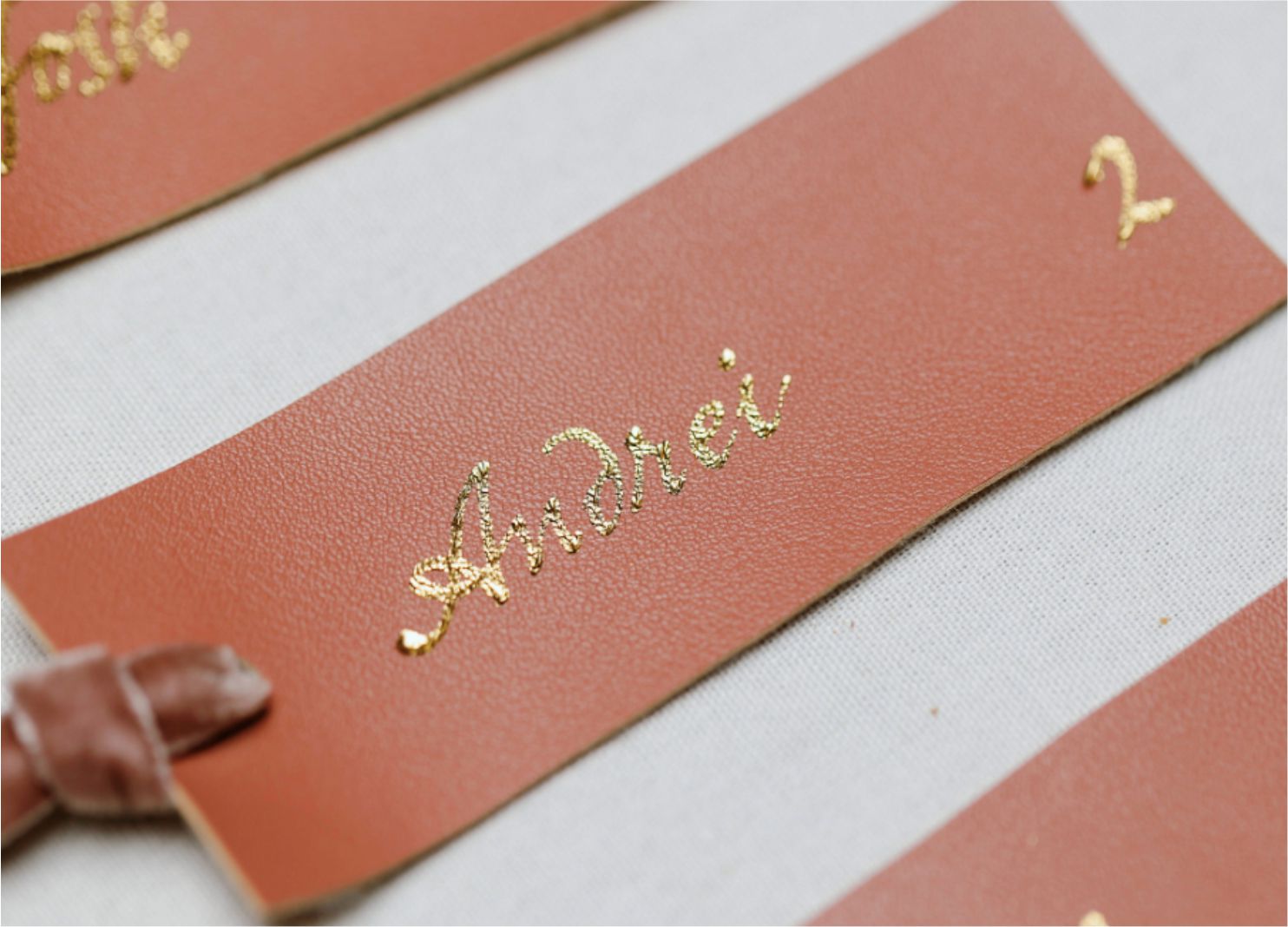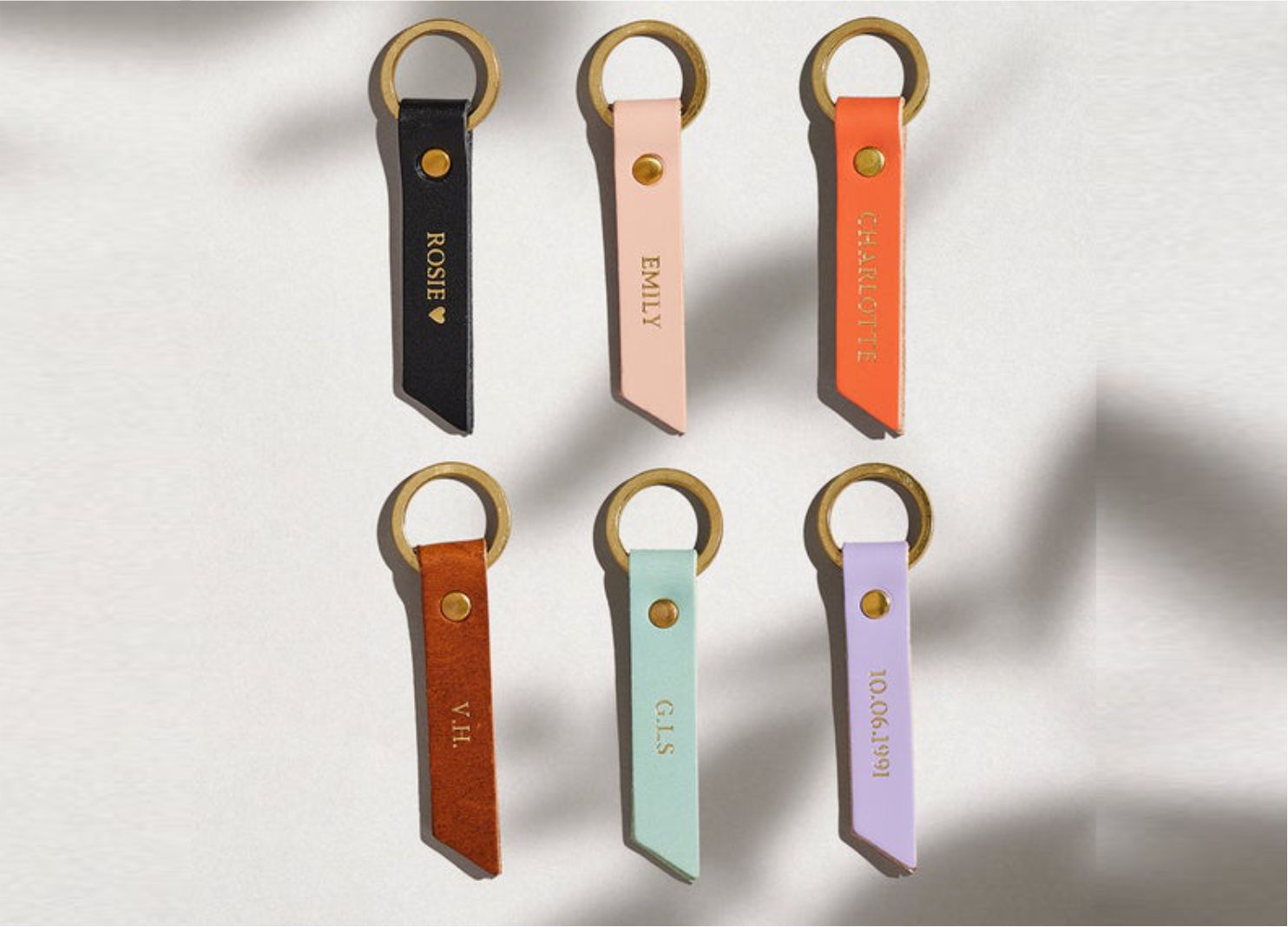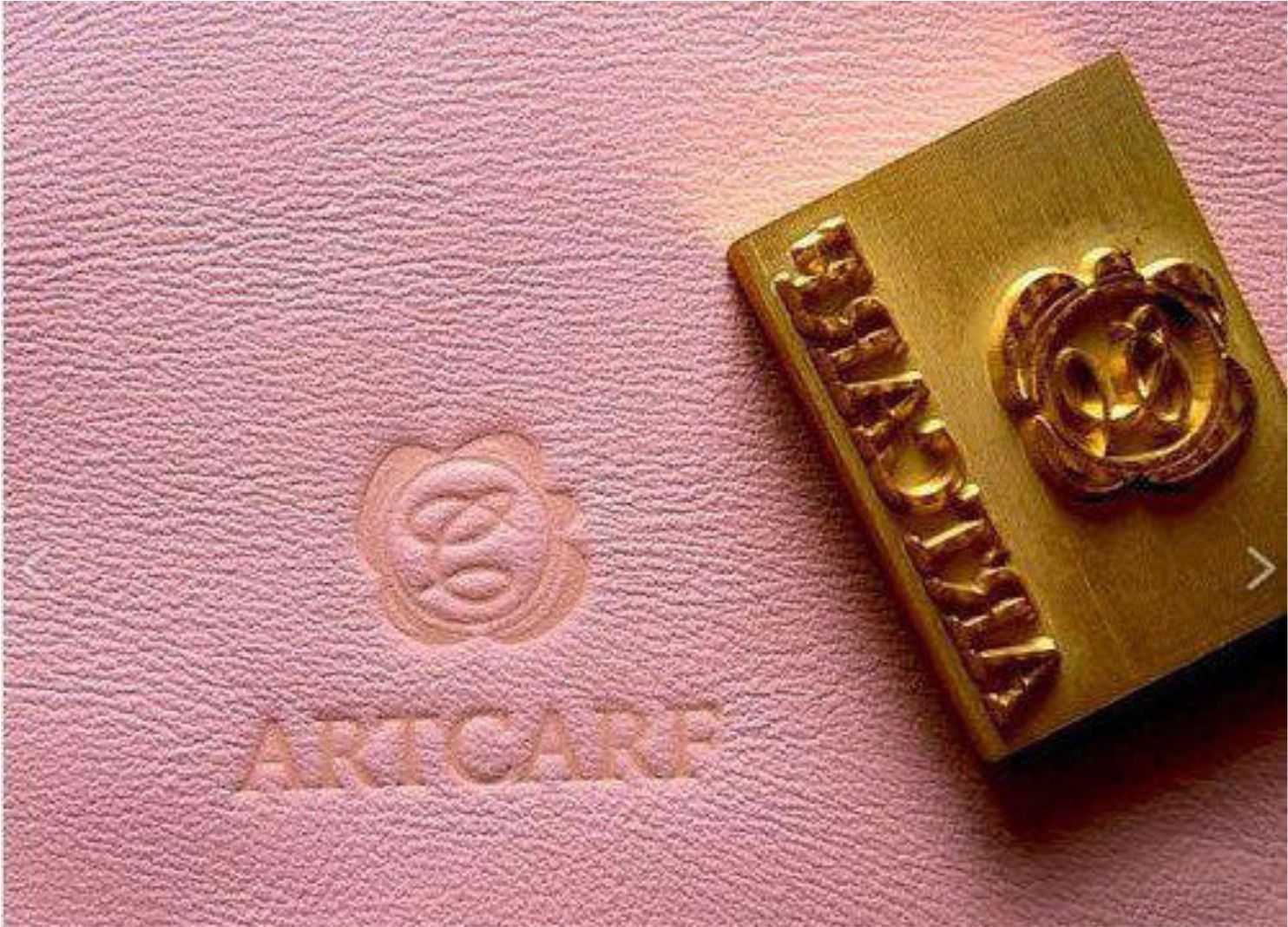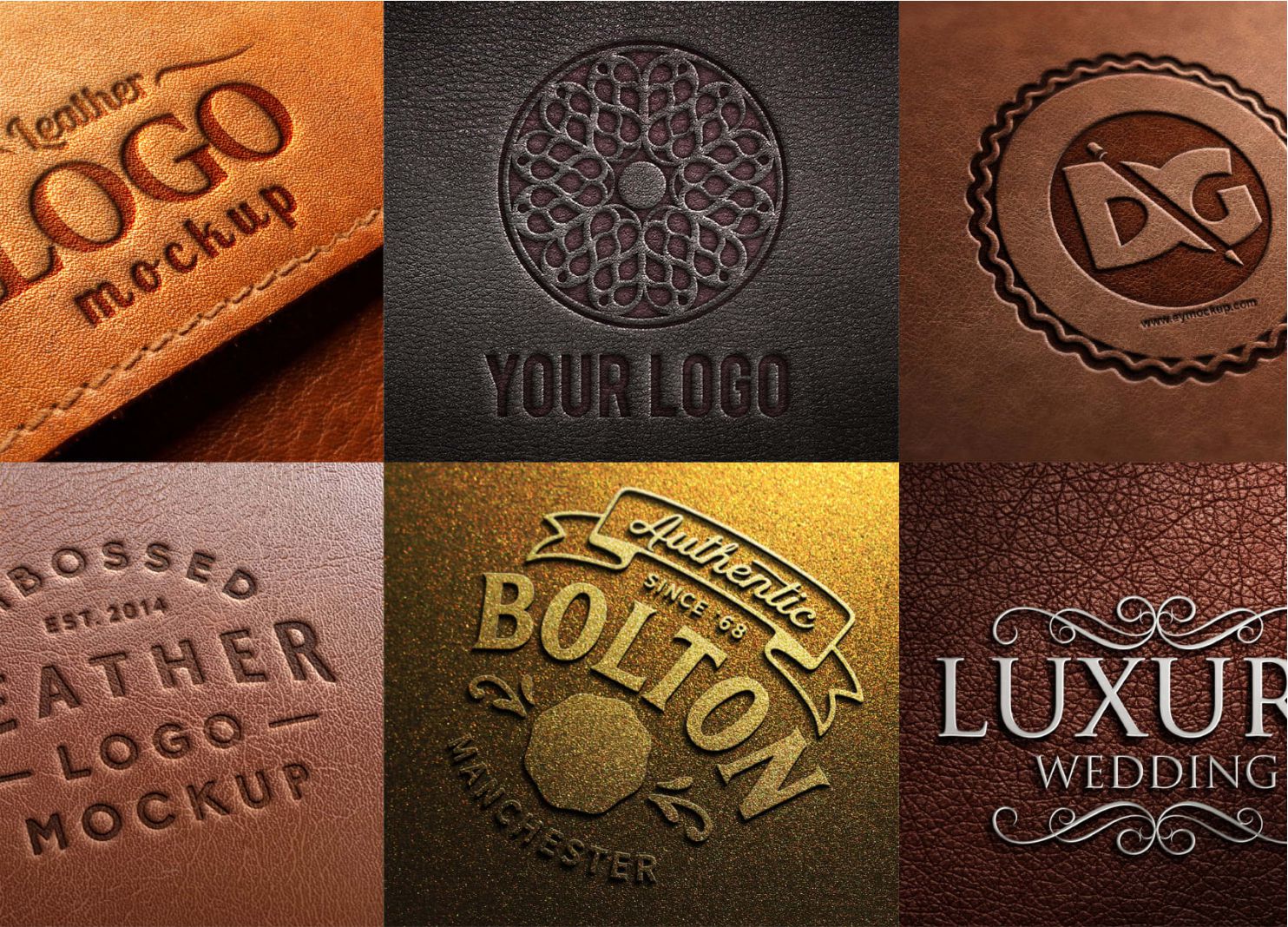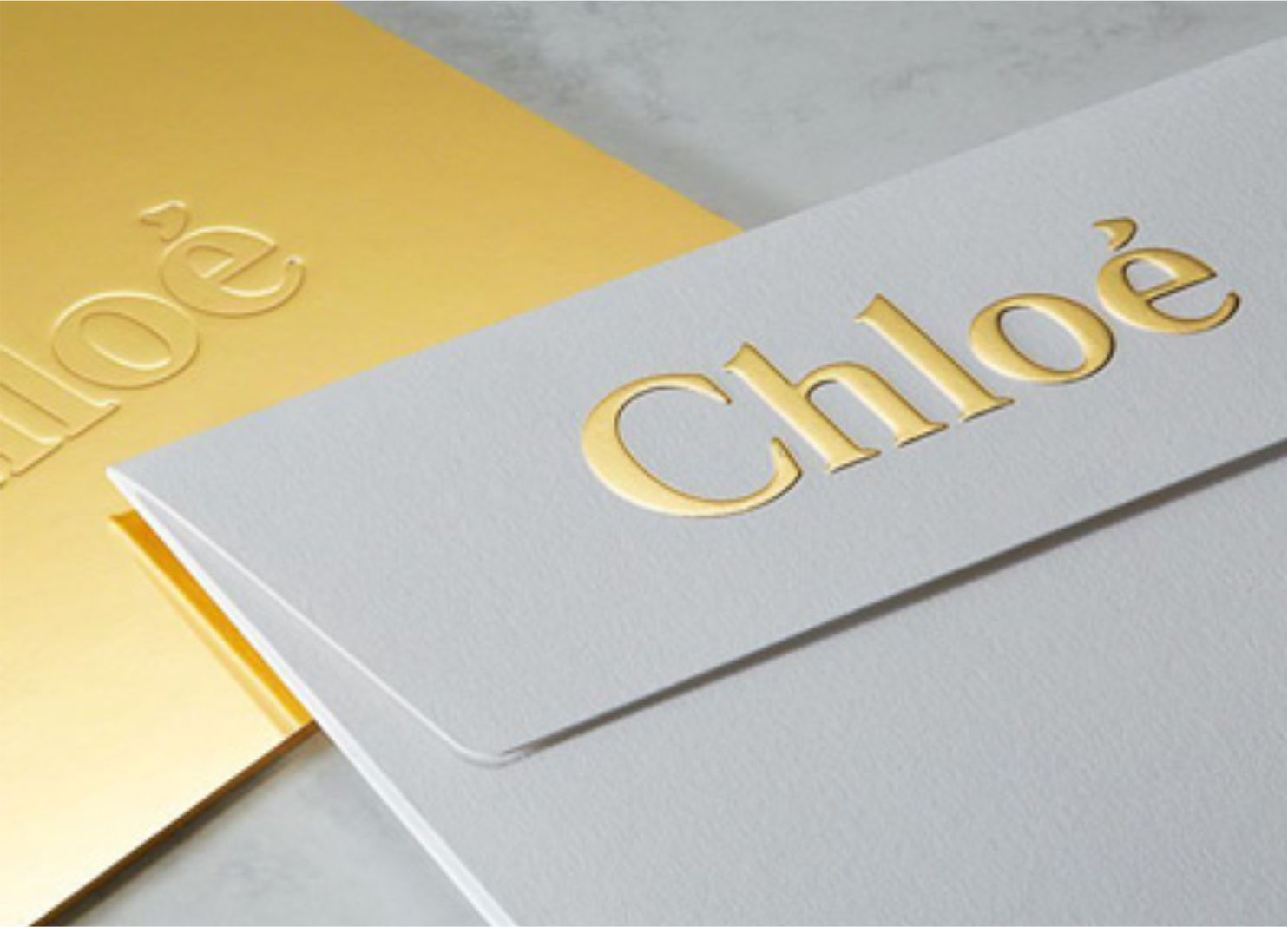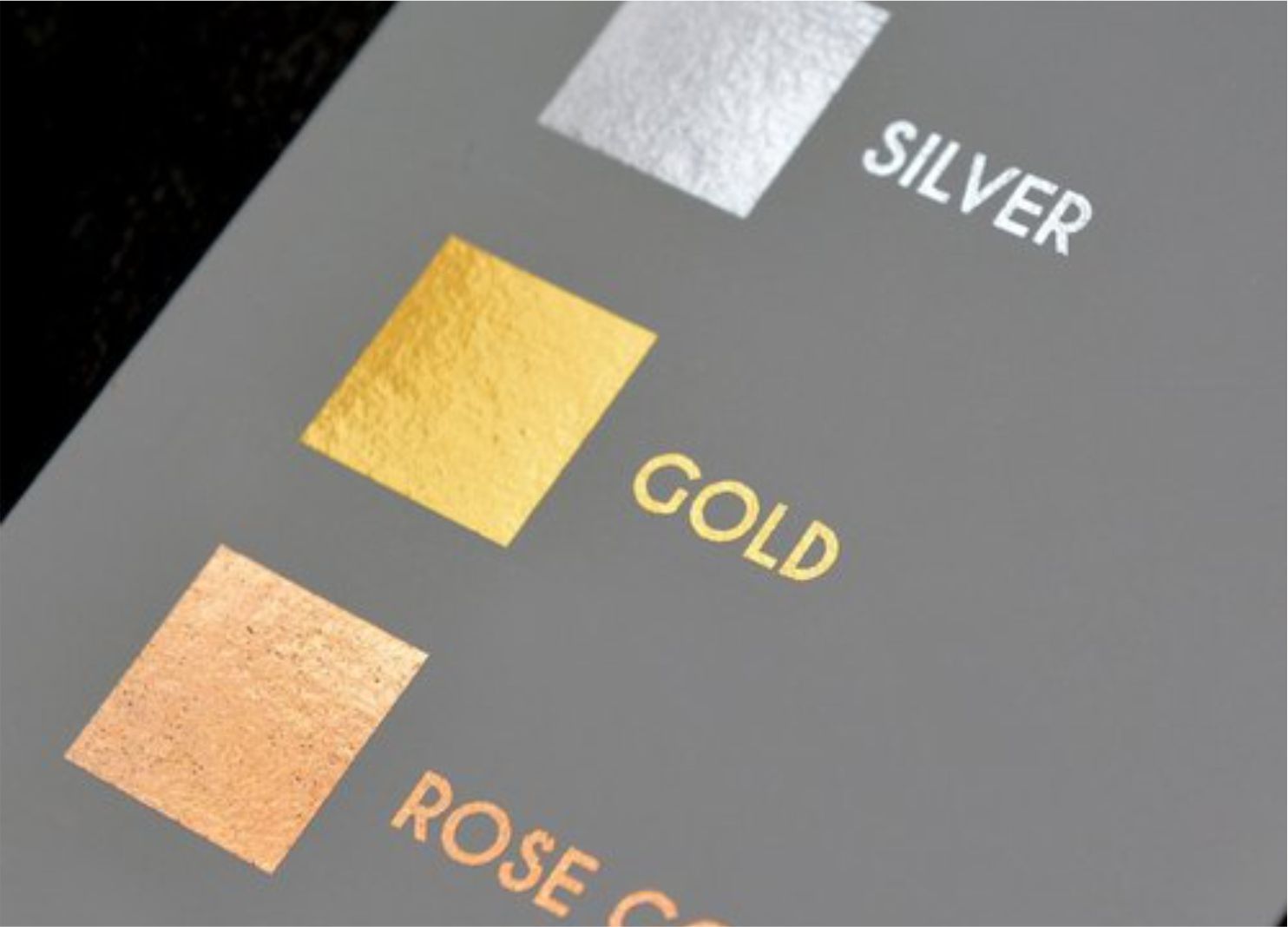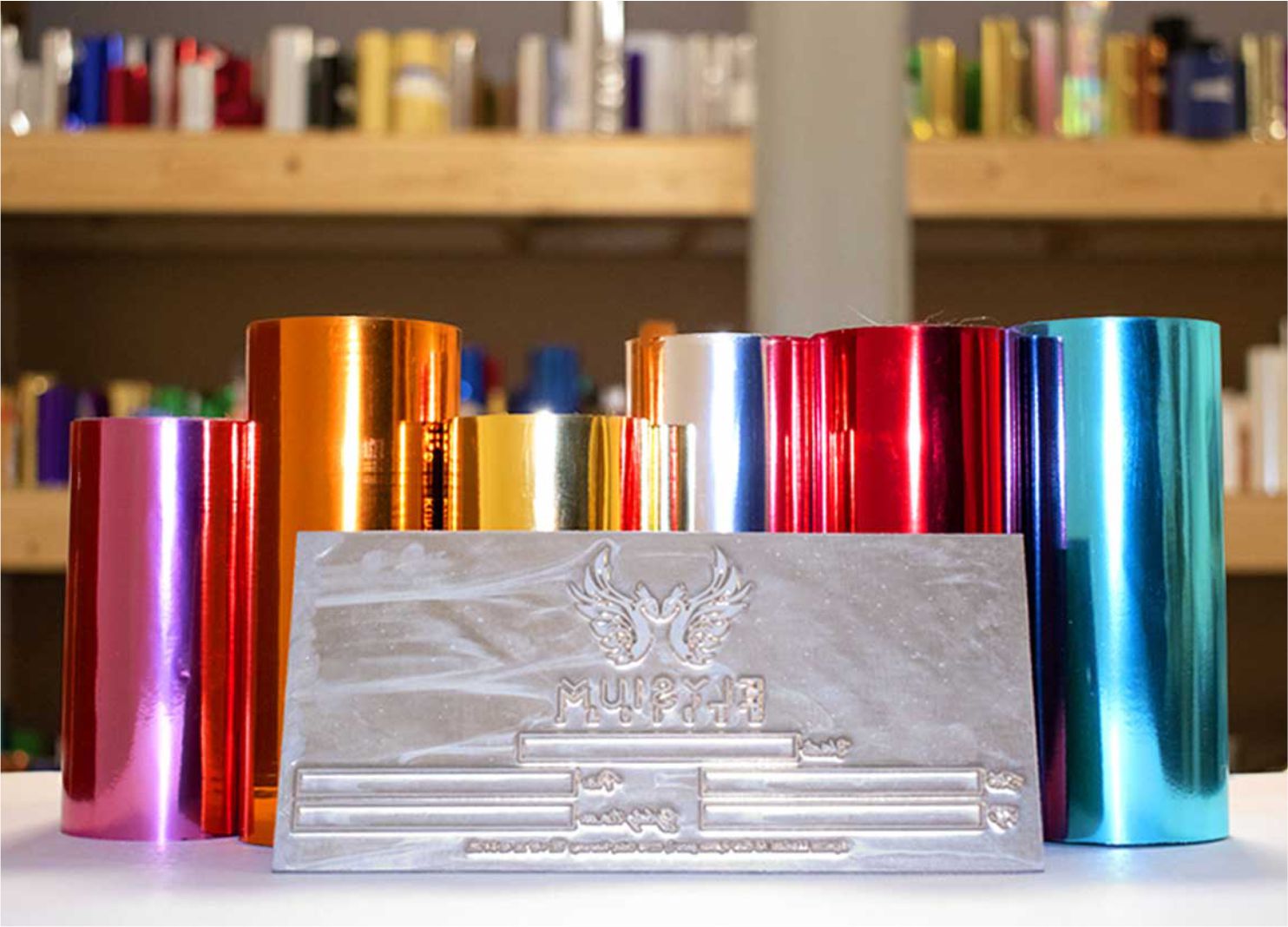Embossing & Stamping
- Printing Technique: Embossing & Stamping
- Embossing & Stamping Products
- Visiting Cards
- Letter Head
- Personal Diary's
- Year Diary's
- Leather Products
- Certificate
- Invitation Card
- Bag
- Passport Cover
- Diary Jacket
- And Much More...
Embossing & Stamping Products
About Embossing, Debossing, Stamping & Foiling
What is Difference Between Embossing & Debossing?
Embossing and debossing are the processes of creating either raised or recessed relief images and designs in paper and other materials. An embossed pattern is raised against the background, while a debossed pattern is sunken into the surface of the material but might protrude somewhat on the reverse side.
Often used in combination with foil stamping, embossing alters the surface of paper stock or other substrates by providing a three-dimensional or raised effect on selected areas. The procedure requires the use of two dies: one that is raised and one that is recessed. The dies fit into each other so that when the paper is pressed between them, the raised die forces the stock into the recessed die and creates the embossed impression. A specific level of pressure is applied to the dies in order to squeeze the fibers of the paper, which results in a permanently raised area in the paper. When the dies are produced, a die maker engraves the desired image into several metal plates, which are the embossing dies for use on an embossing press. A thorough understanding of the process will enable a more successful result. Generally, embossing is the process most often employed to attract attention or convey a high quality textural contrast in relation to the surrounding area of the paper stock.
Debossing” is similar to embossing, but recesses the design rather than raising it. Rather than the paper being raised in specific areas, it is indented. The process involves applying pressure to the front side of a substrate and forcing the material down from the surface. Although it is not as common as embossing, it is occasionally used to provide a different effect or appearance that fits a particular theme. Embossing and debossing on digitally printed applications is an off-line process, which may add a significant cost to the job.
Embossing is basically used to create a distinctive effect. The greatest concern and emphasis on the client’s behalf should be placed on the outcome of the embossed effect. In order to achieve the best possible effect, it is important to understand the embossing process and the types of dies that are used for embossing. The three factors that need to be controlled during the embossing process are:
1) Pressure: the intensity of the impact on the weight of the stock being embossed.
2)Heat: the ability to maintain a consistent heat level for the best impression.
3)Die depth: the client's artwork or the engraver's efforts will initially determine the die depth, however, if by looking at the artwork it appears that an adjustment of the die depth may be necessary, the die may need to be retooled to achieve a greater depth. Most types of paper can be embossed, and size is not normally a consideration. Embossing without ink, so that the image is raised but not colored, is called “blind embossing”. Embossing used in conjunction with ink, so that the raised area is coloured, is called “colour register embossing”. Embossing used in conjunction with foil stamping is called “combination stamping” or “combo stamping”.
What is foiling and embossing?
Foil stamping is the application of metallic foil (often gold or silver) or pigment to press a thin layer of foil onto the paper's surface with a heated die through heat and pressure. ... Blind Embossing is an image pressed into the paper creating a three-dimensional design without the use of ink, foil or pigment.
difference between letterpress and embossing?
"So what's the difference between letterpress, embossing and debossing?” Letterpress printing leaves an impression in the paper by pressing into the paper from one side. An impression can be made with or without ink. ... Embossing produces a raised image by pressing paper between a two-sided die.
What is blind embossing printing?
Blind Embossing creates the design without the use of ink or foil. What is Blind Embossing? It is very common for a design to be embossed without using any printing or foiling in the design. This is known as Blind Embossing. In lieu of ink or foil, the embossing process alone creates the text or design on the paper.
